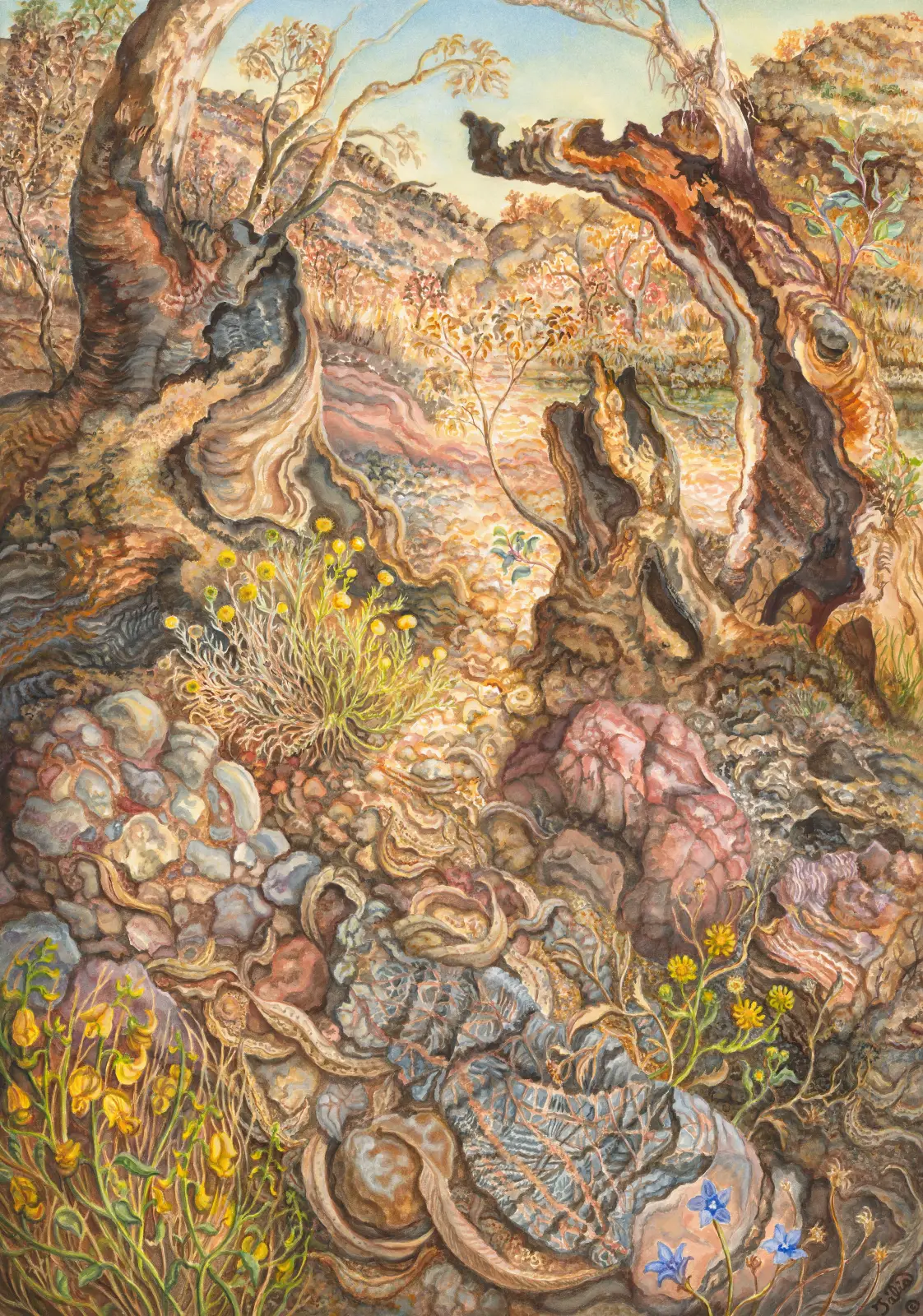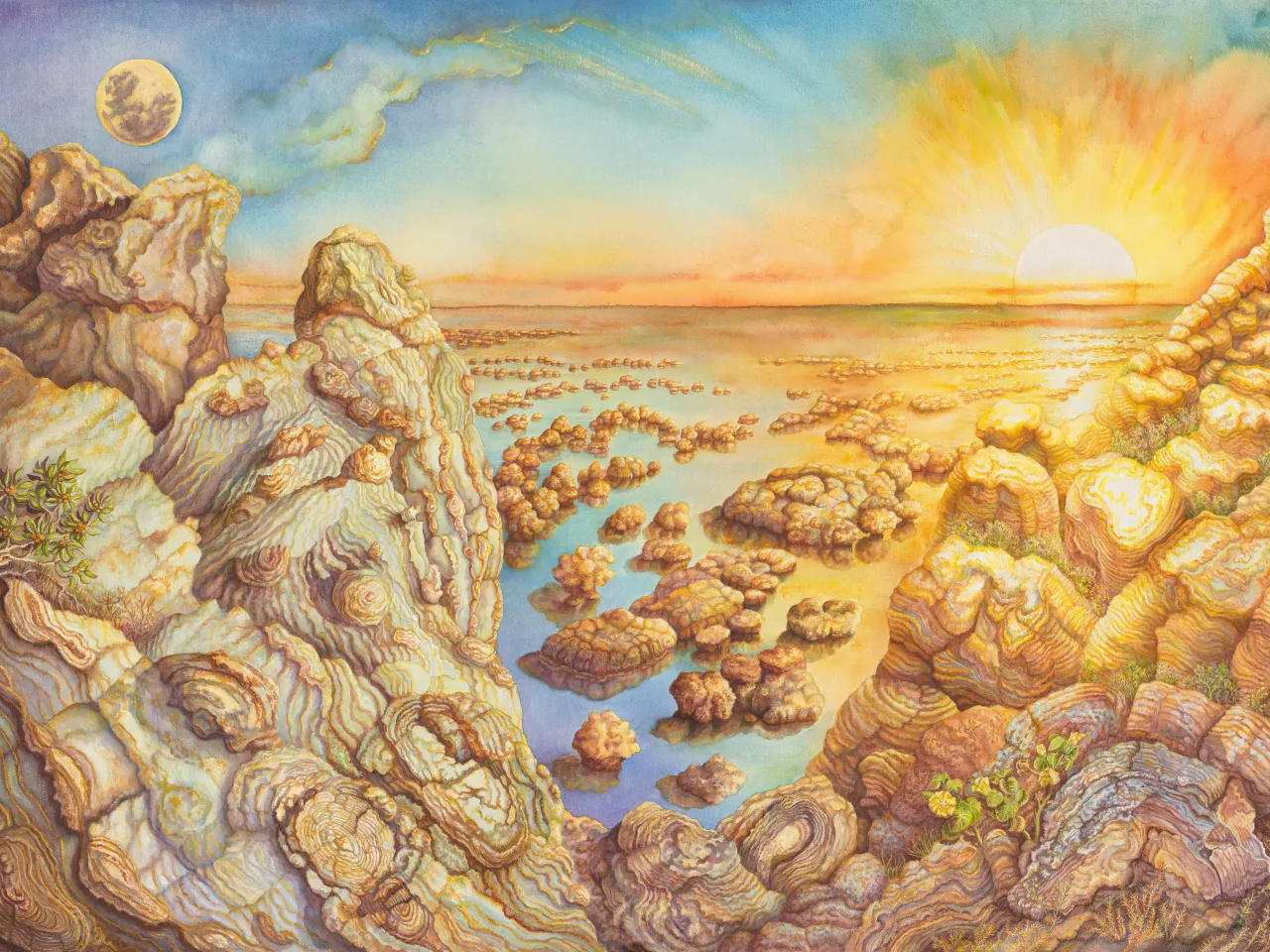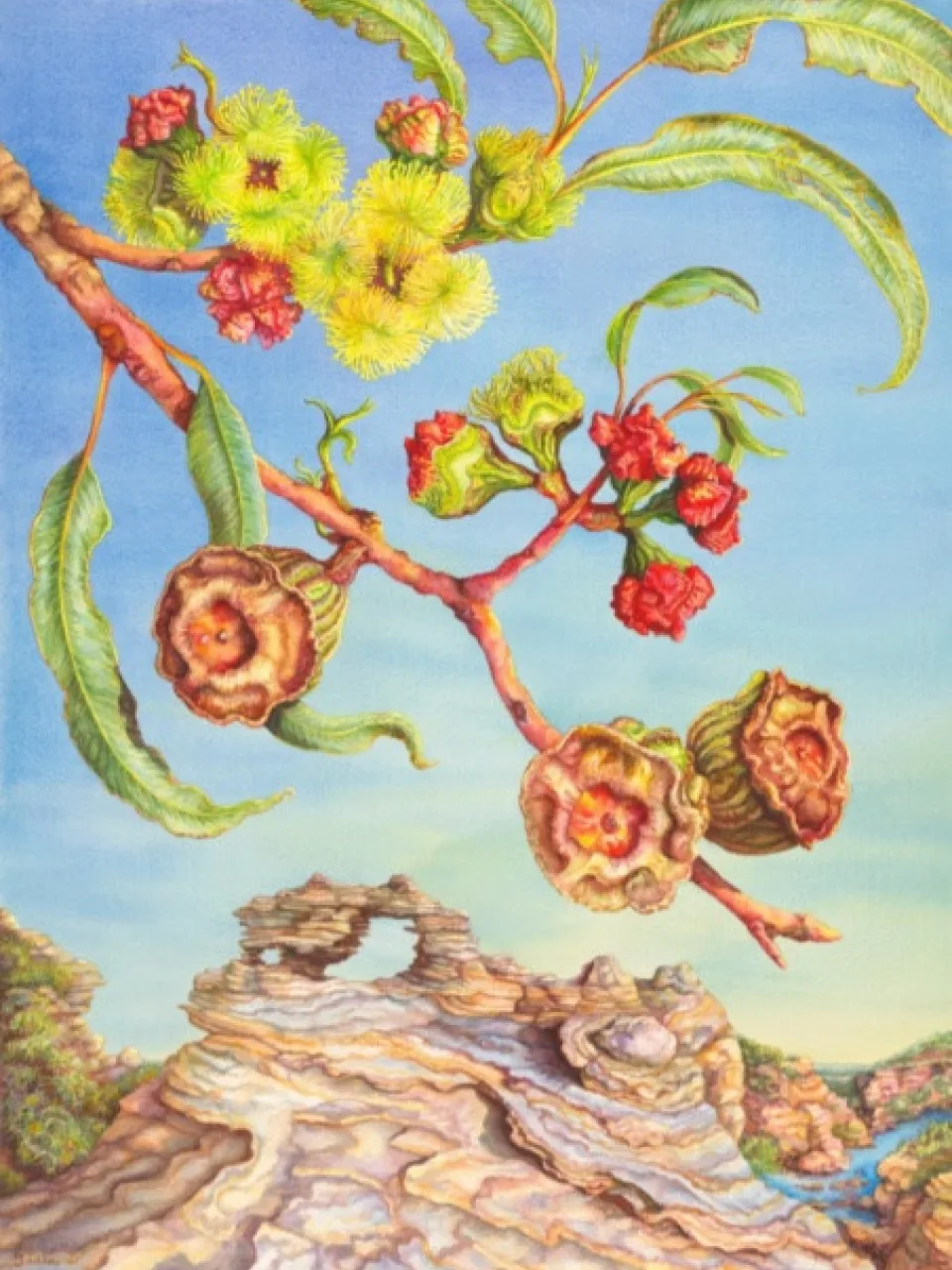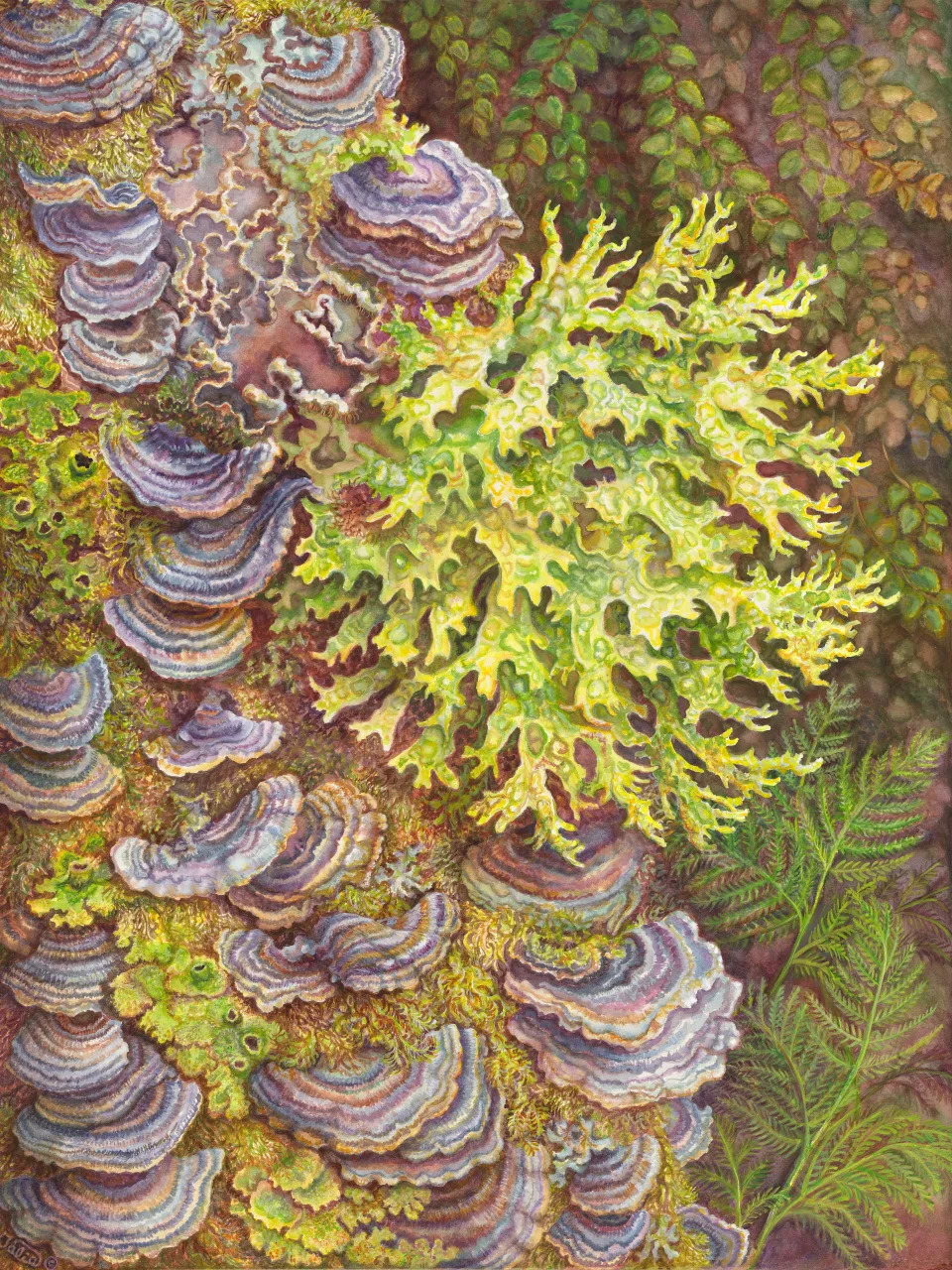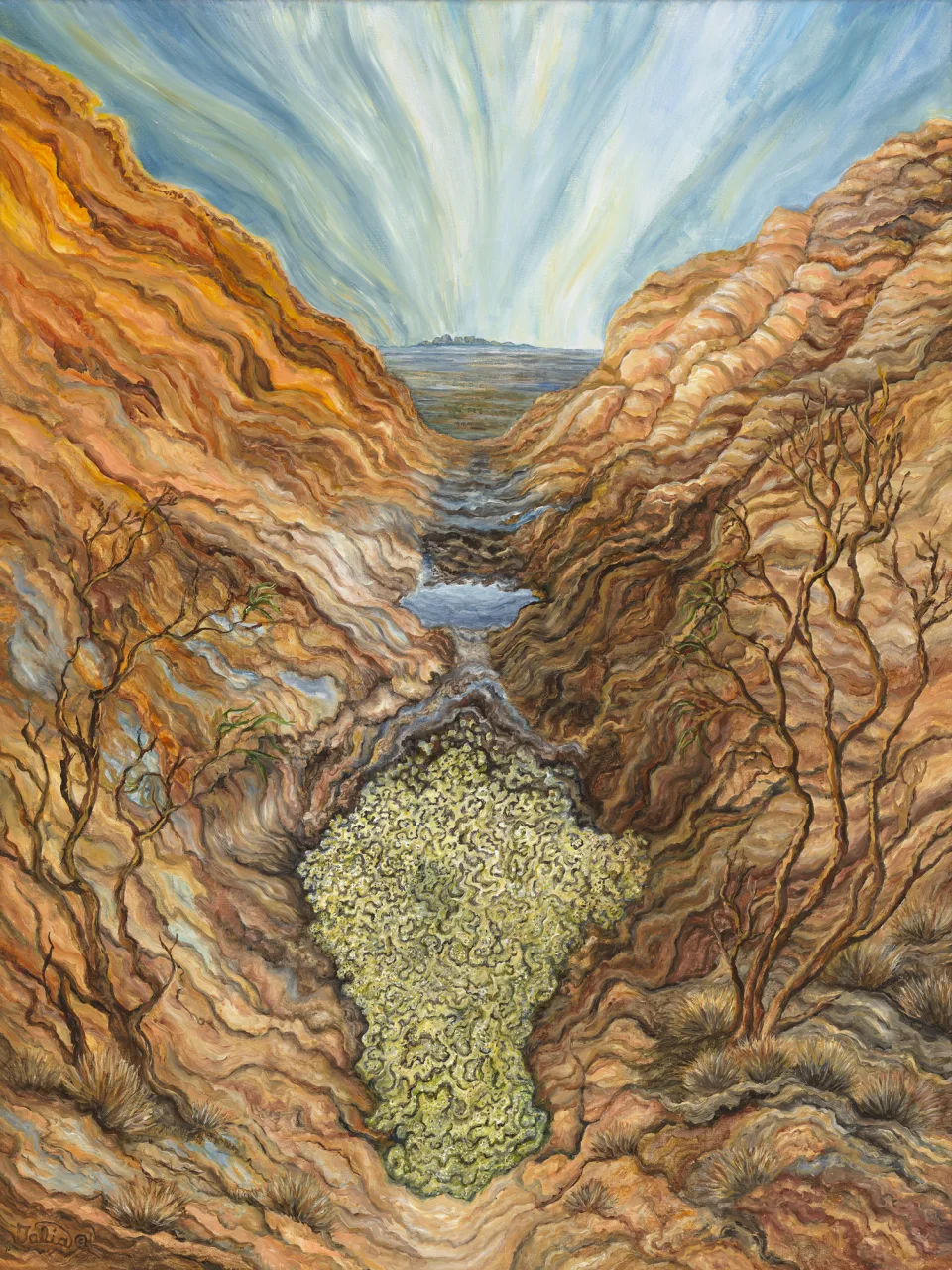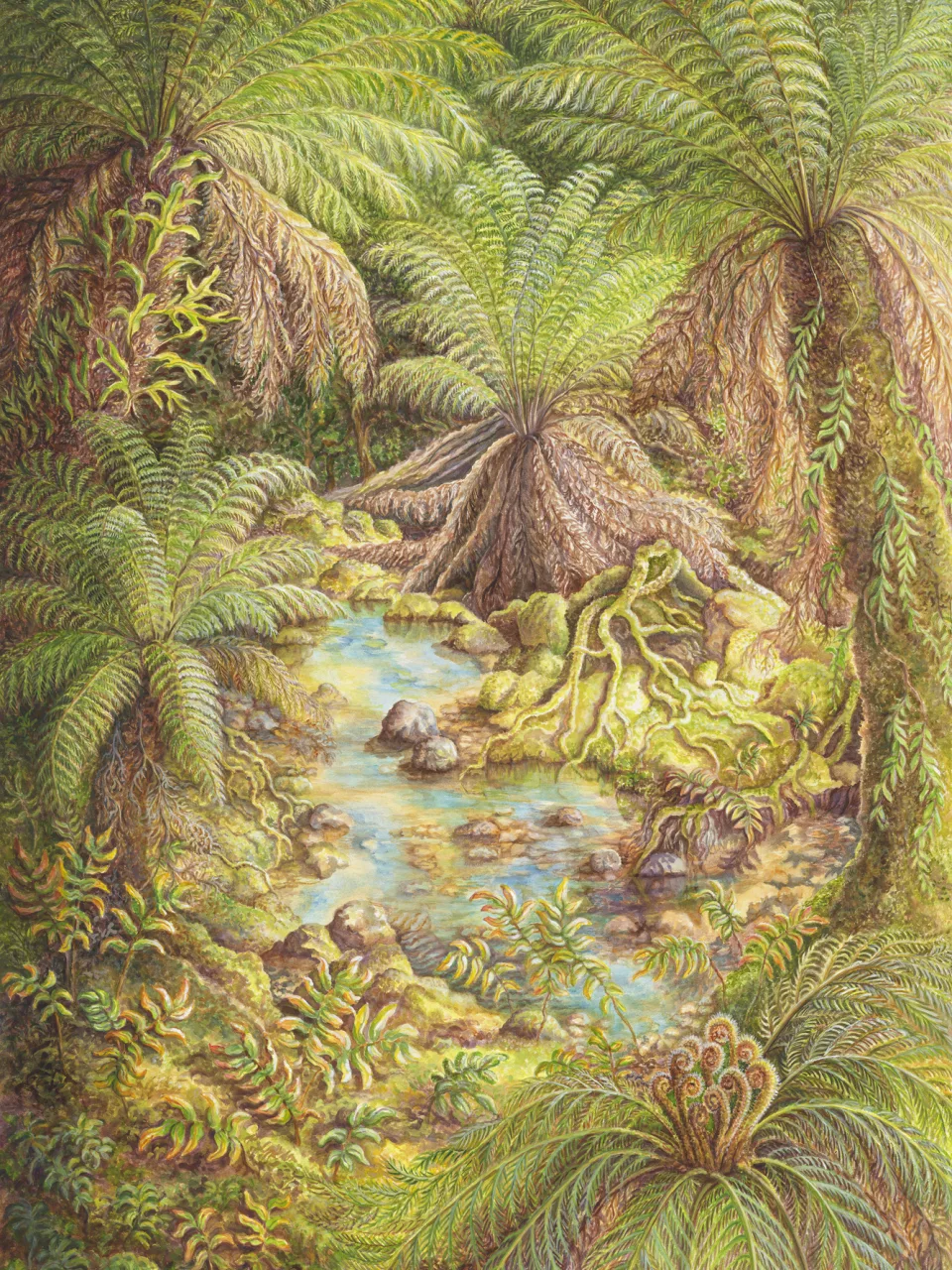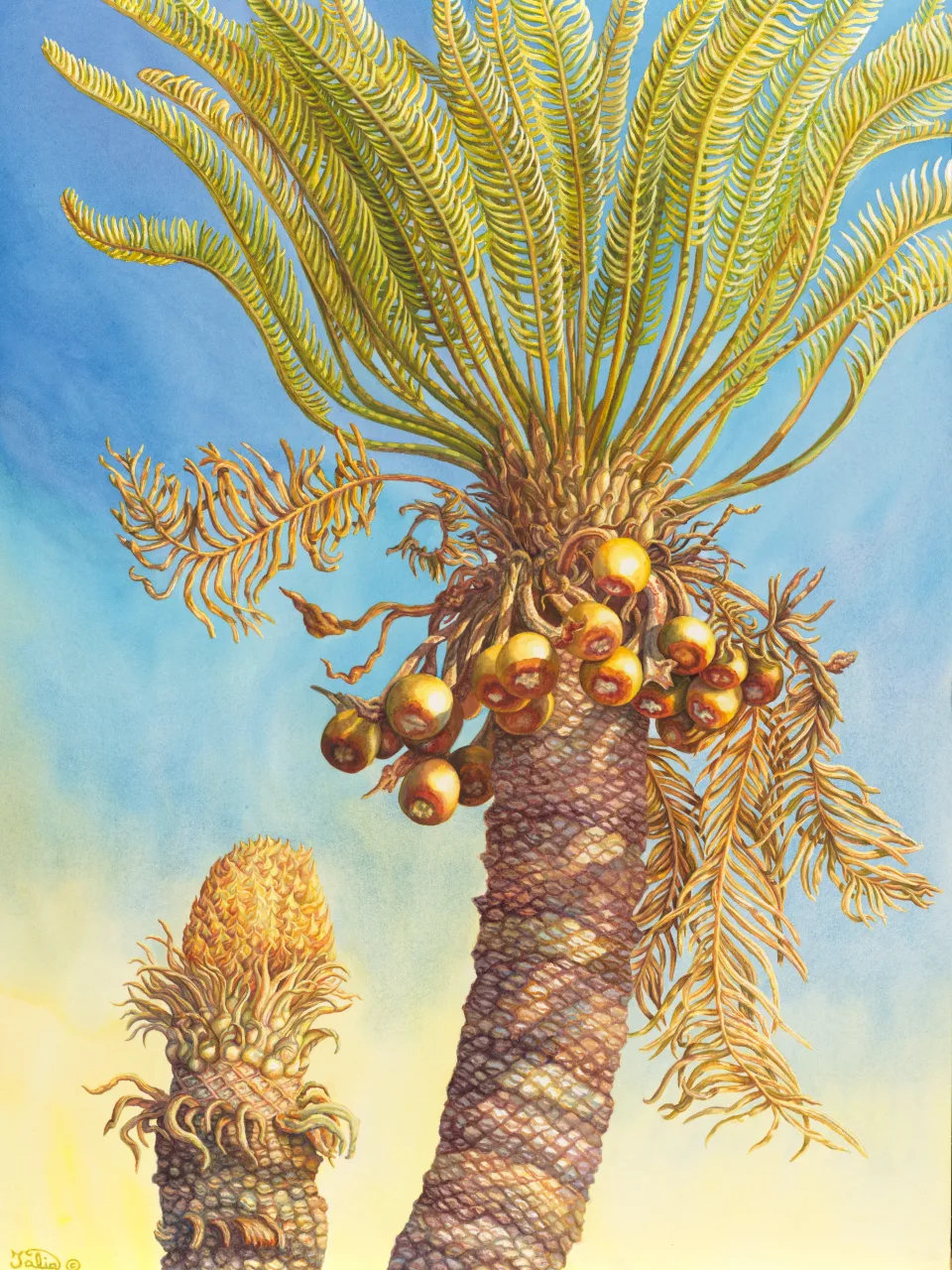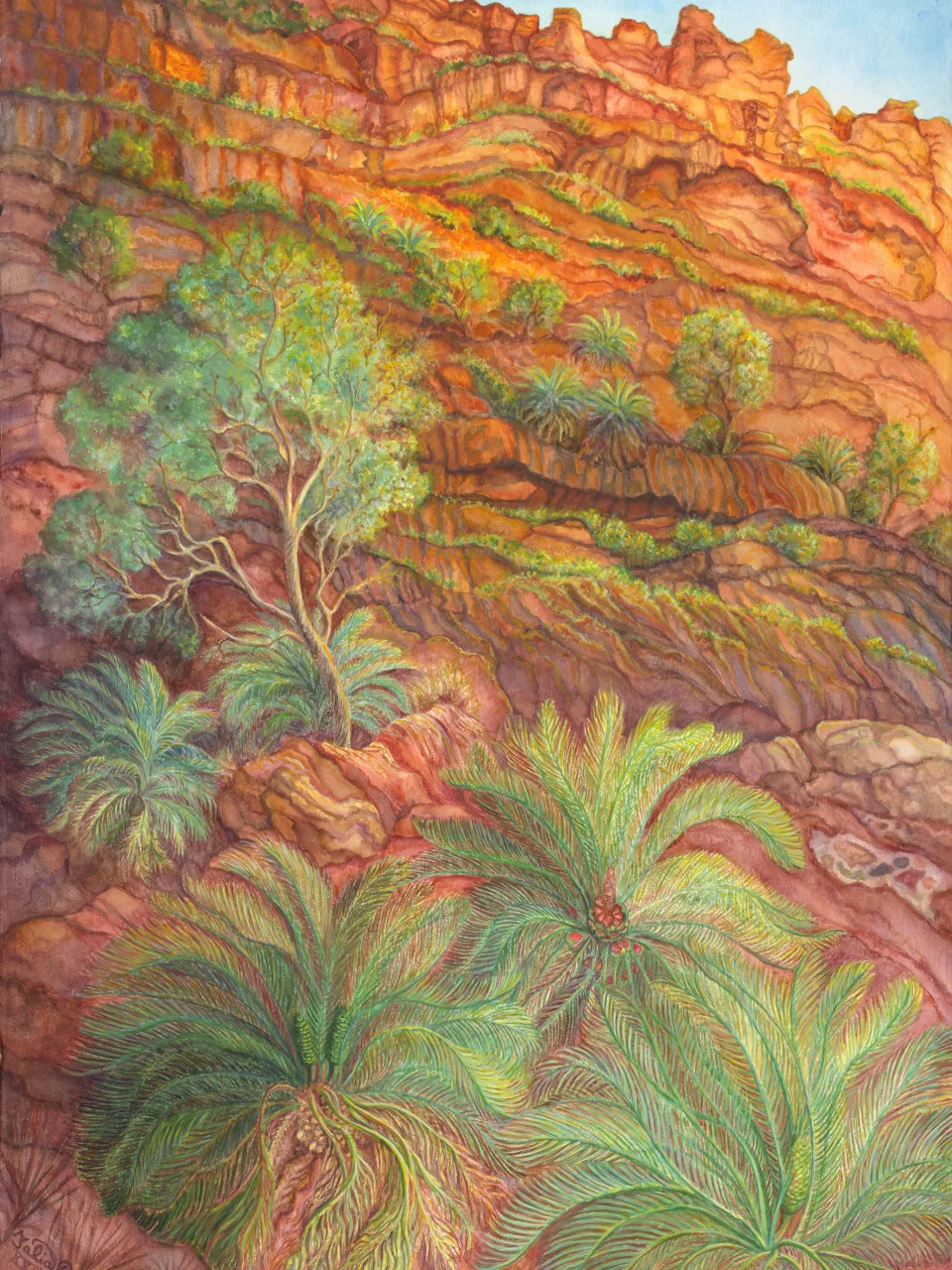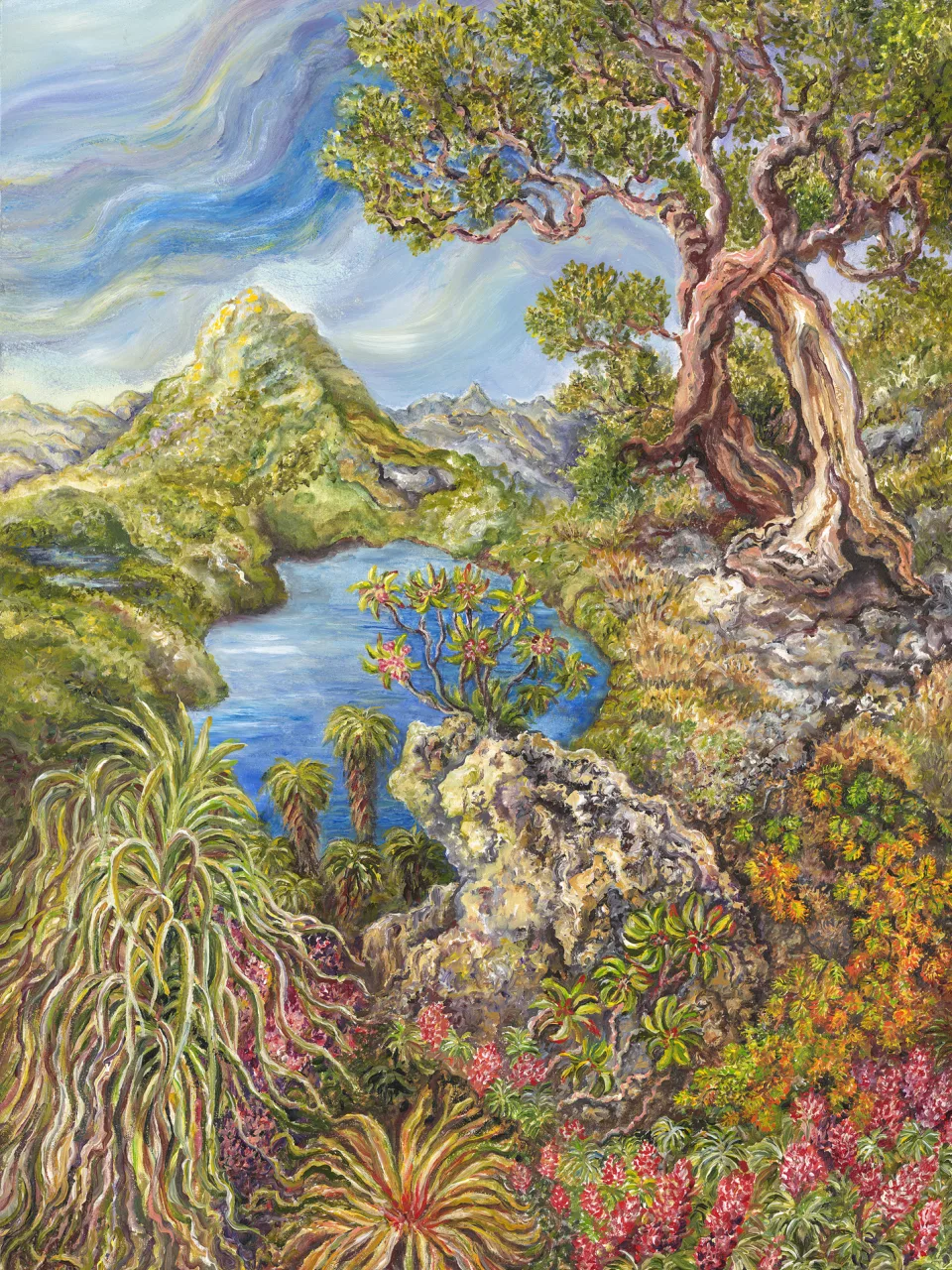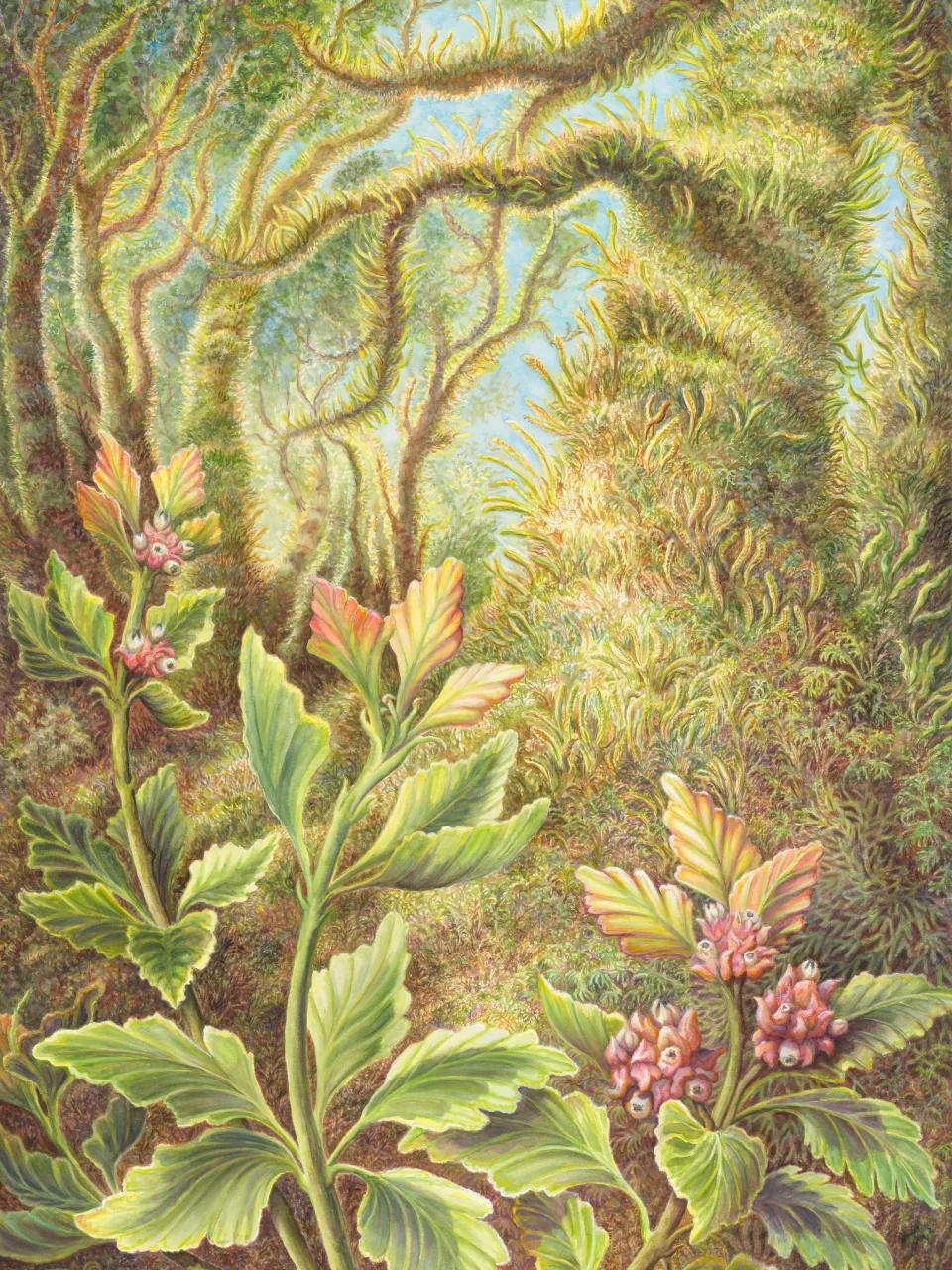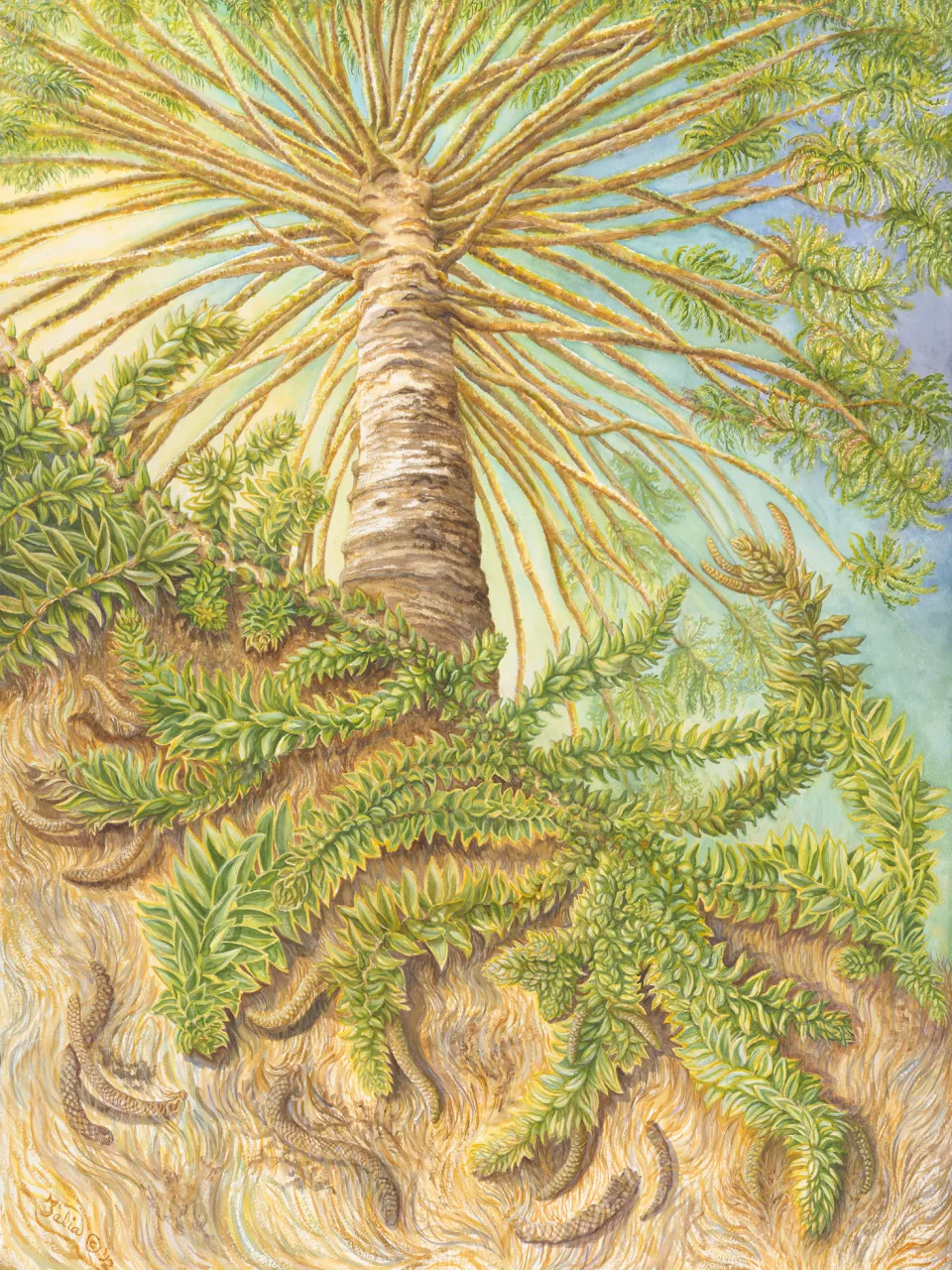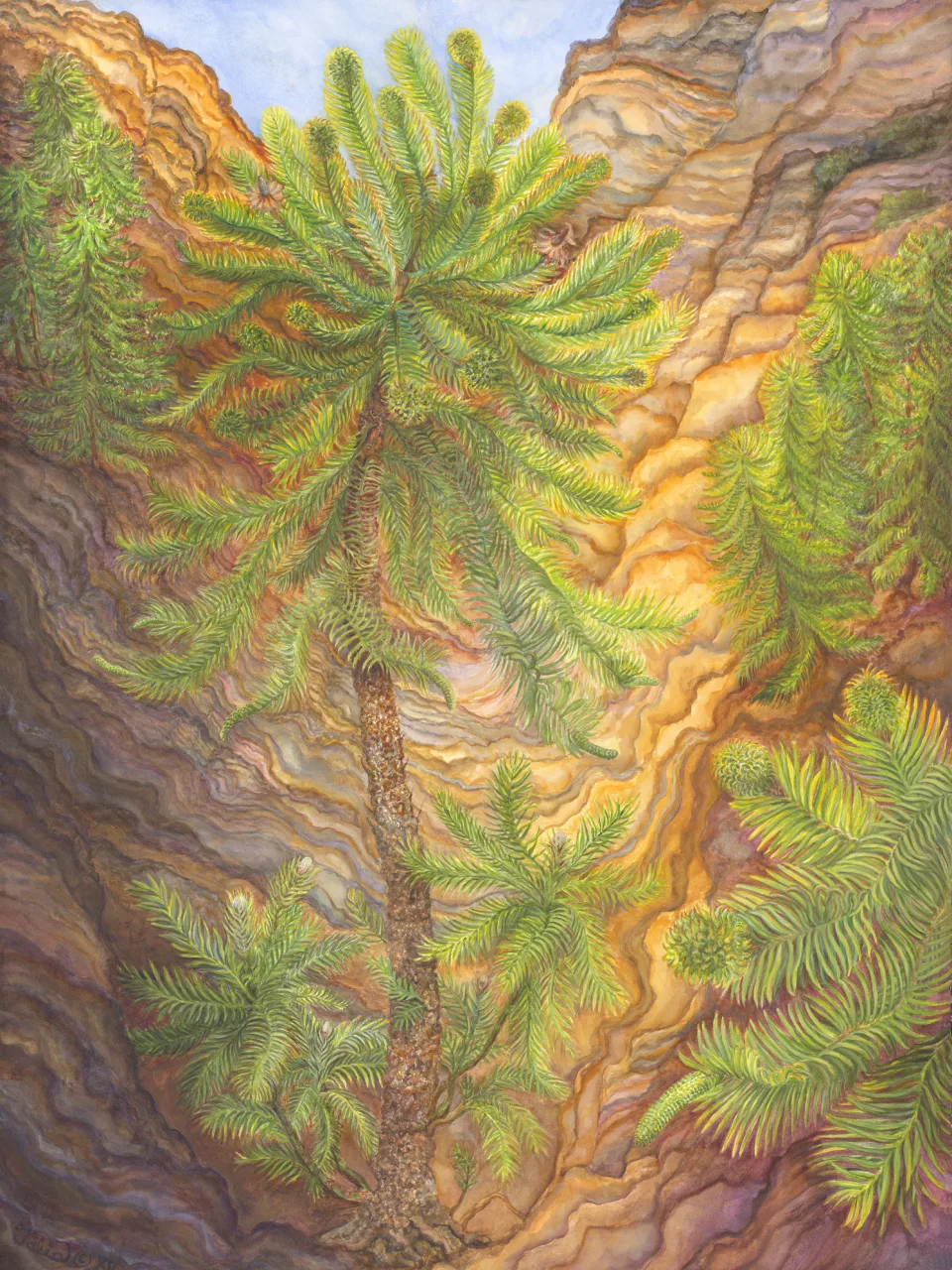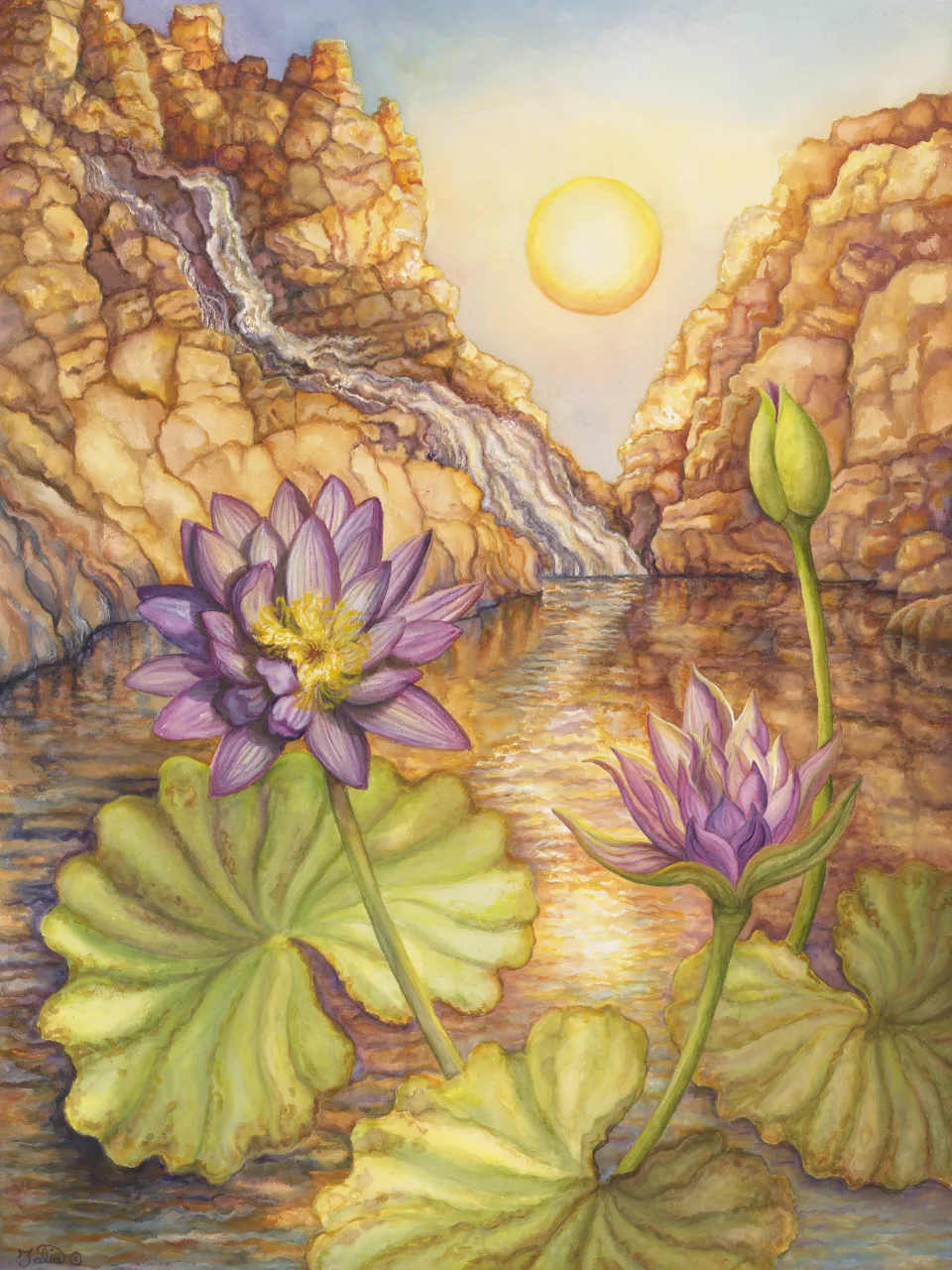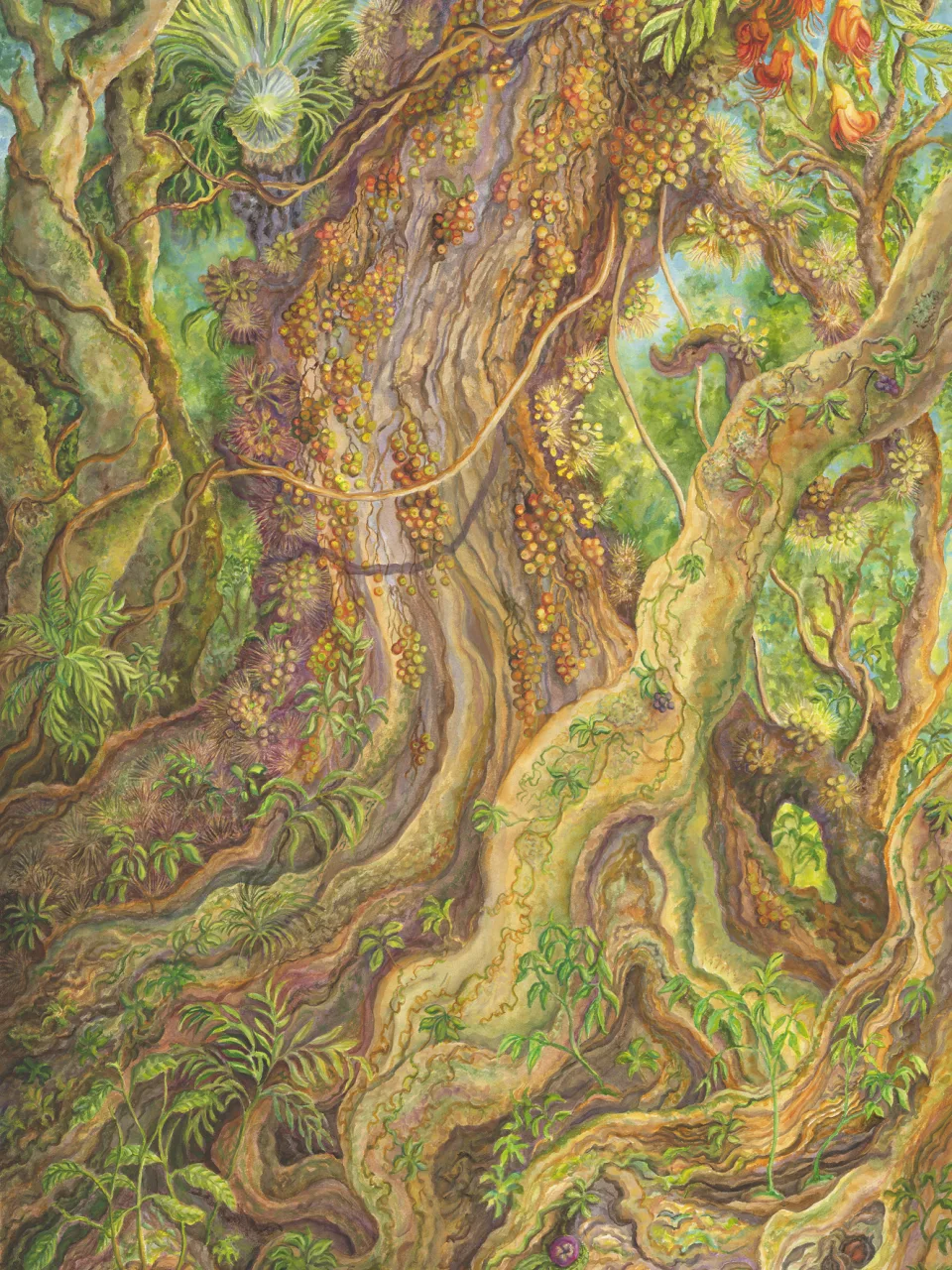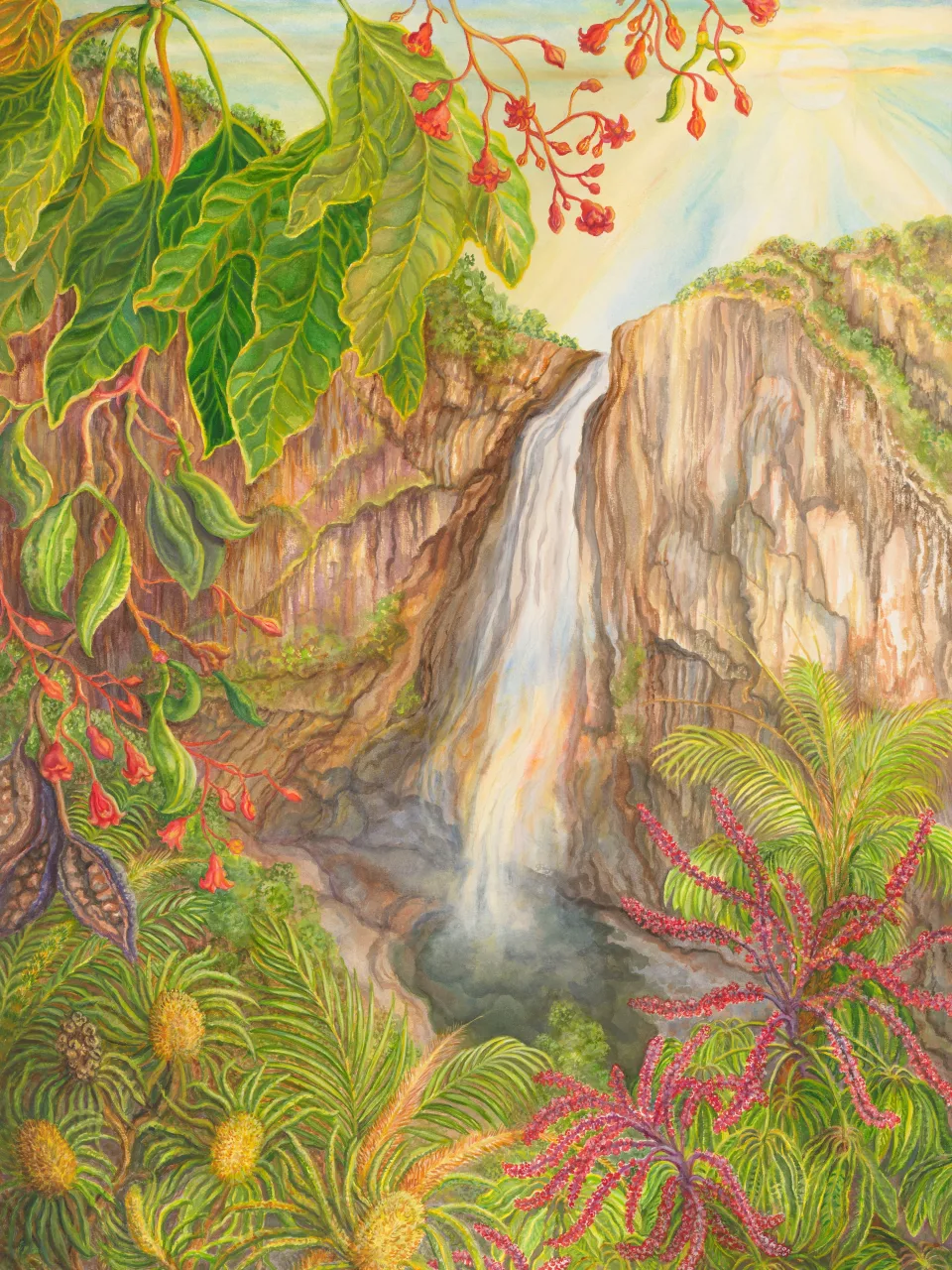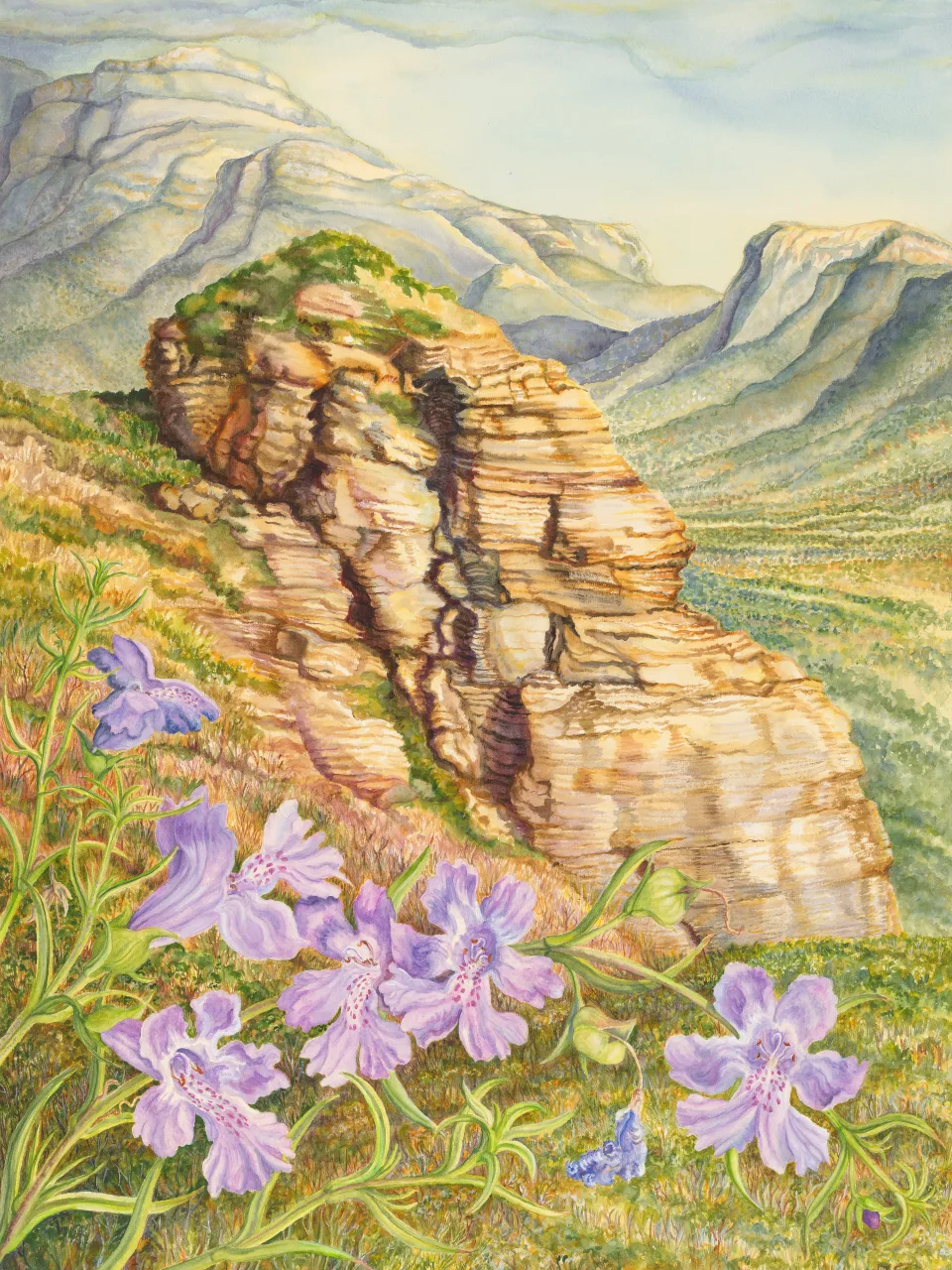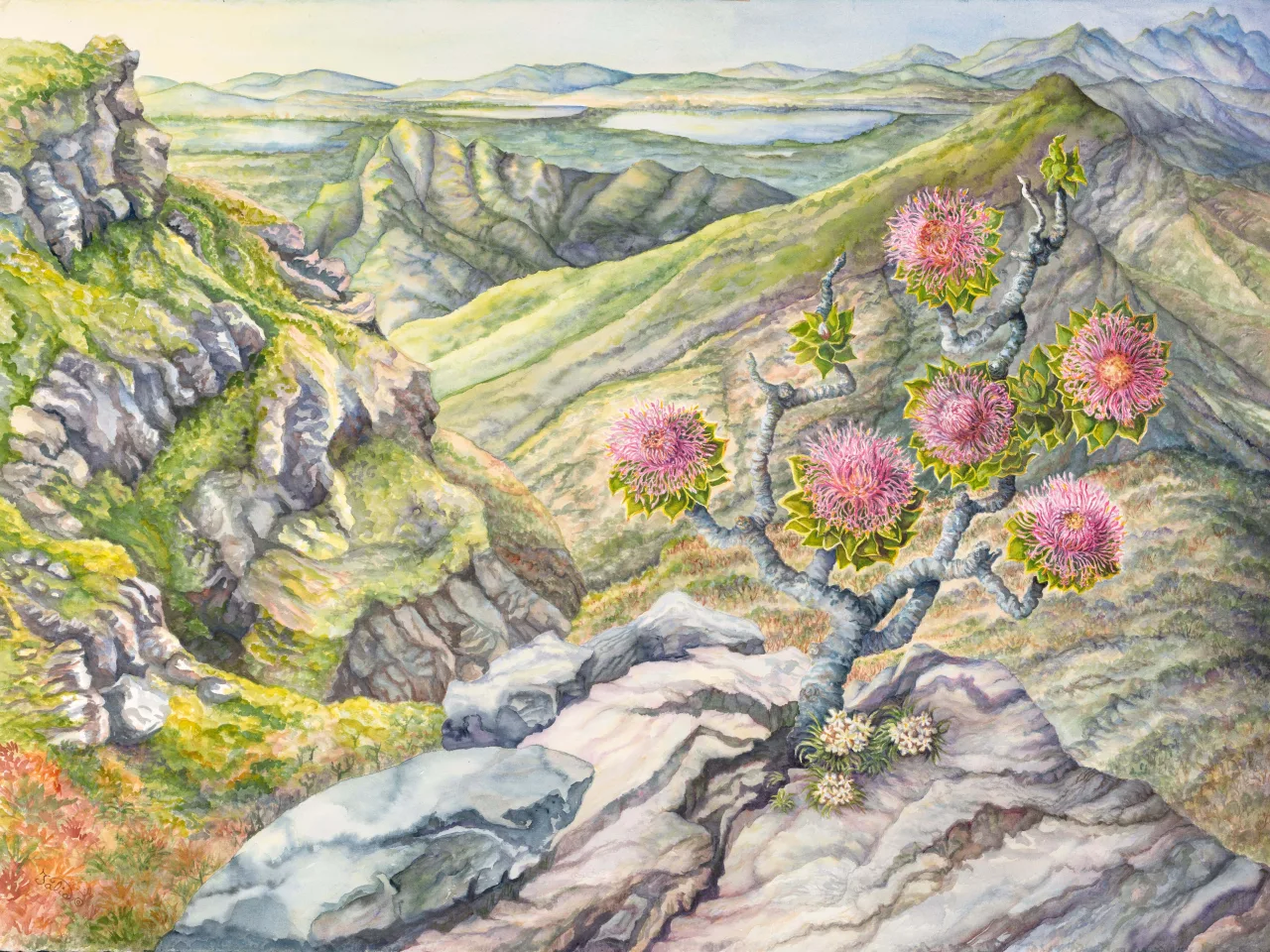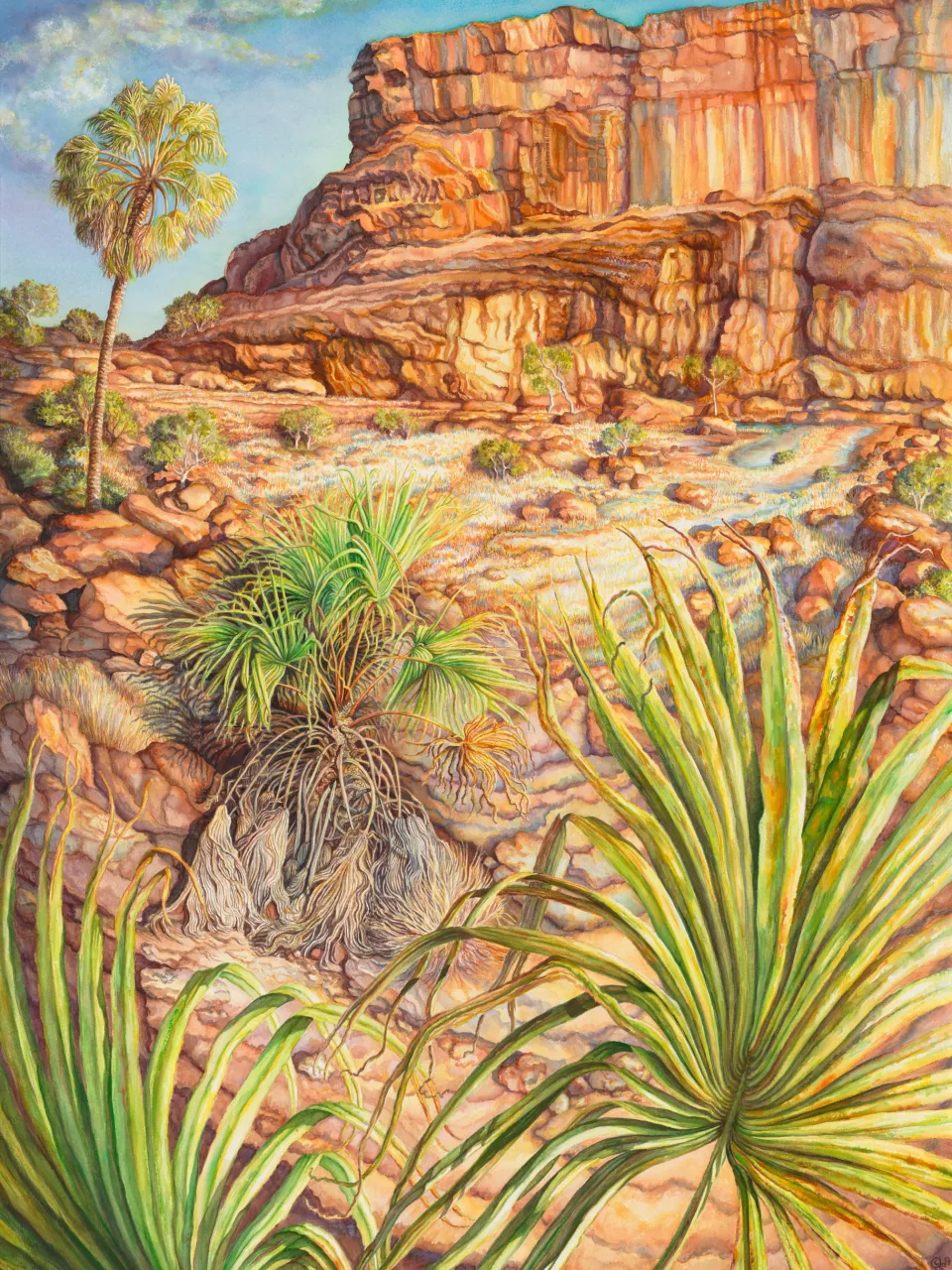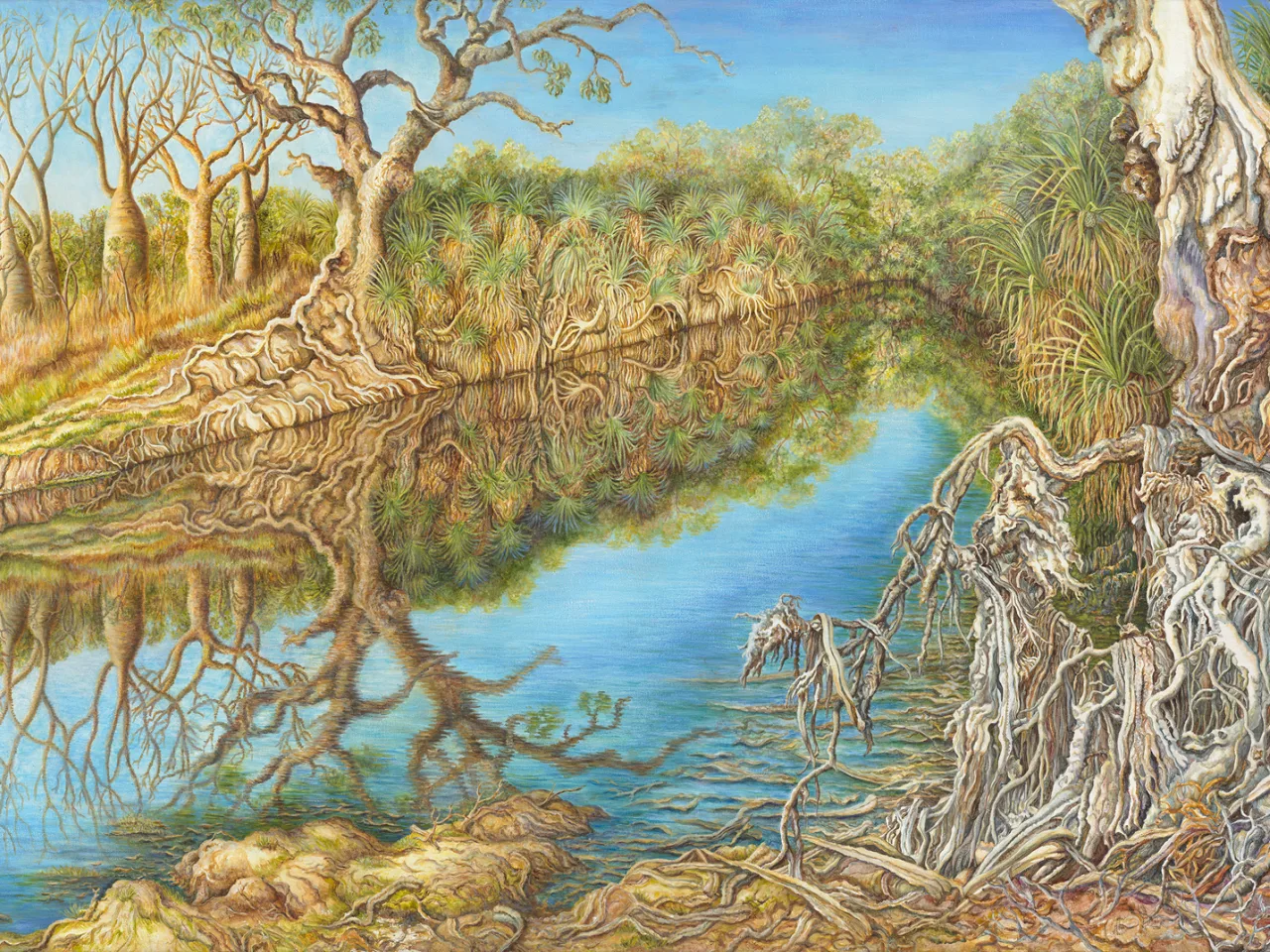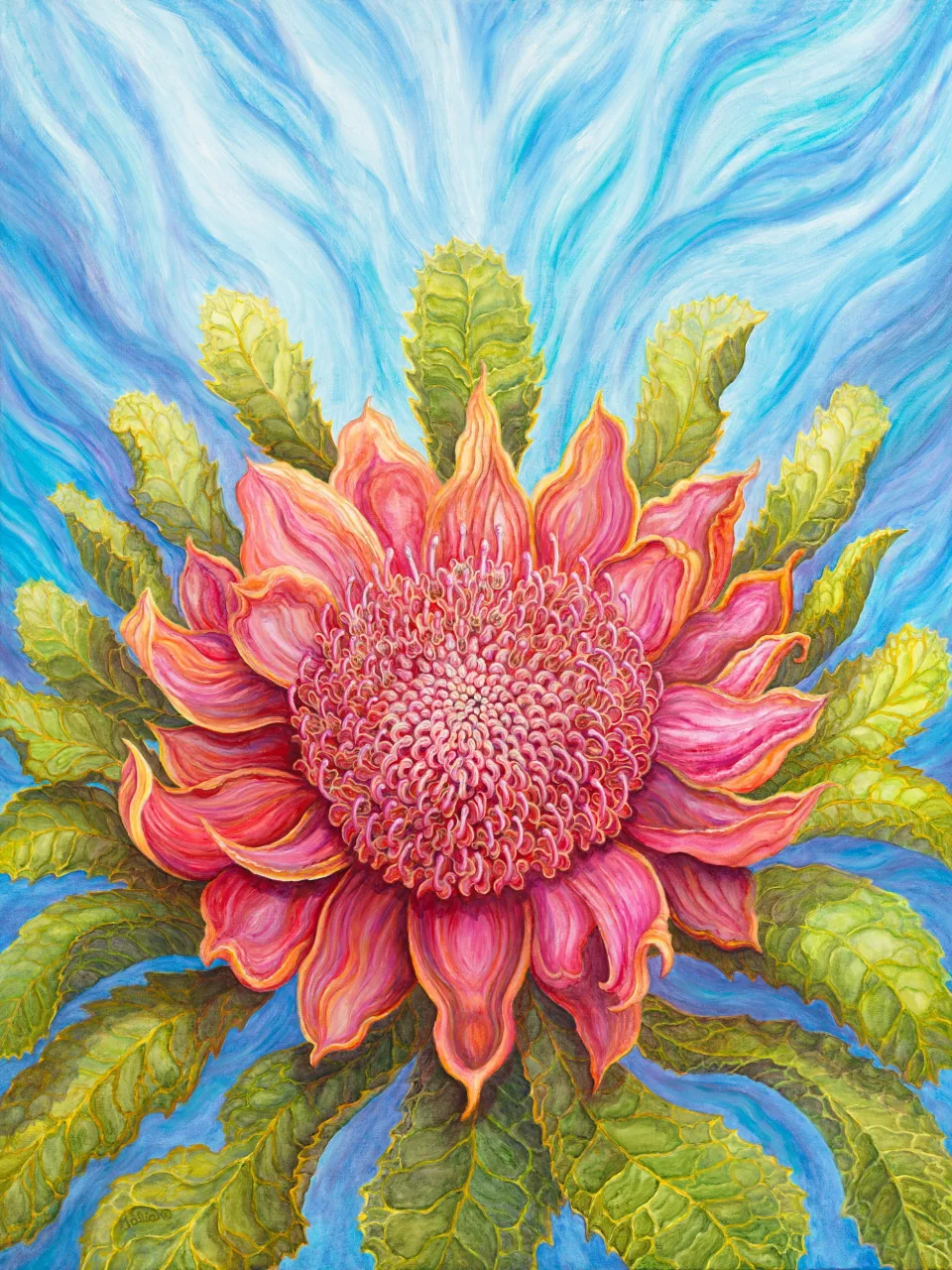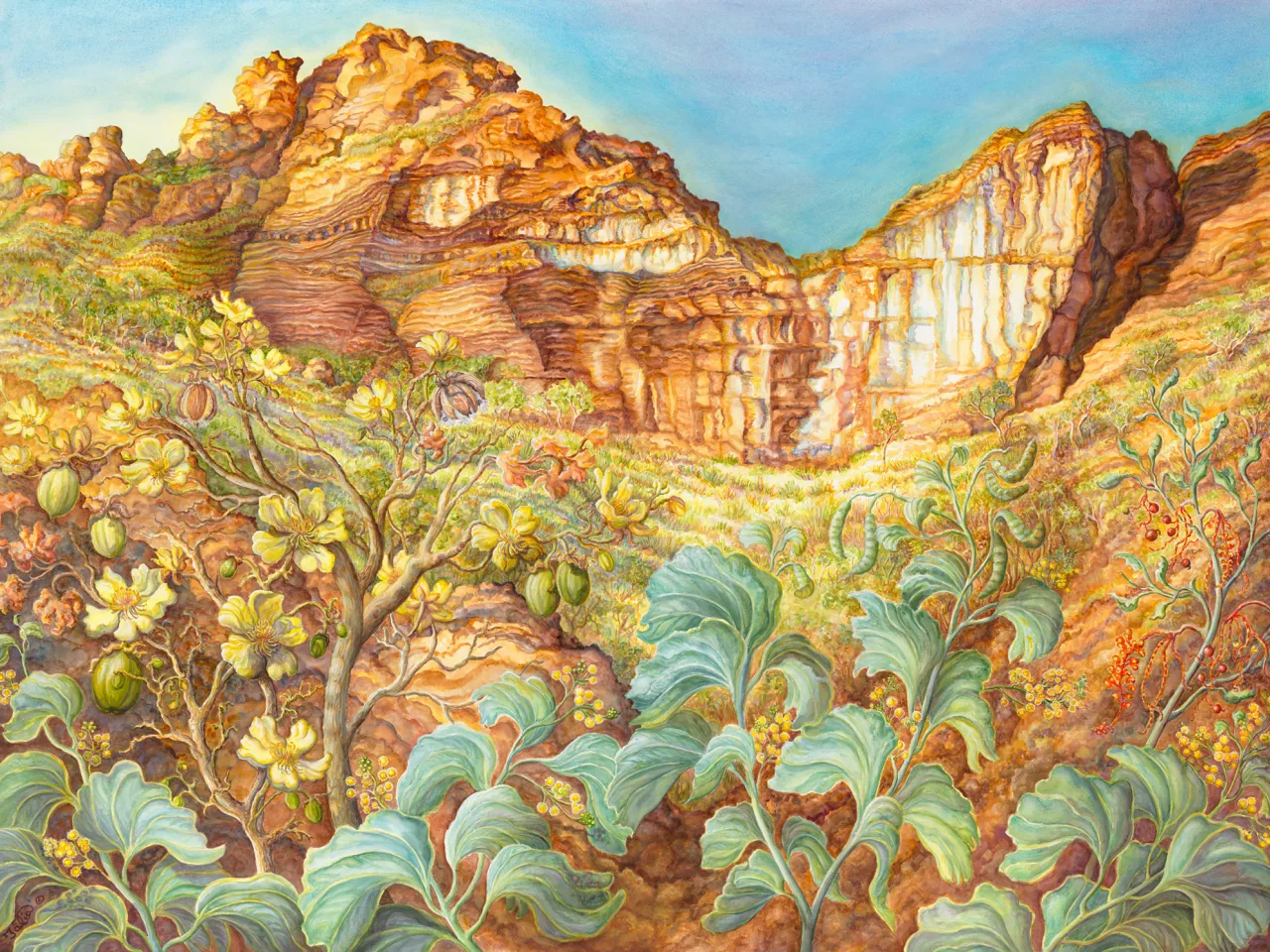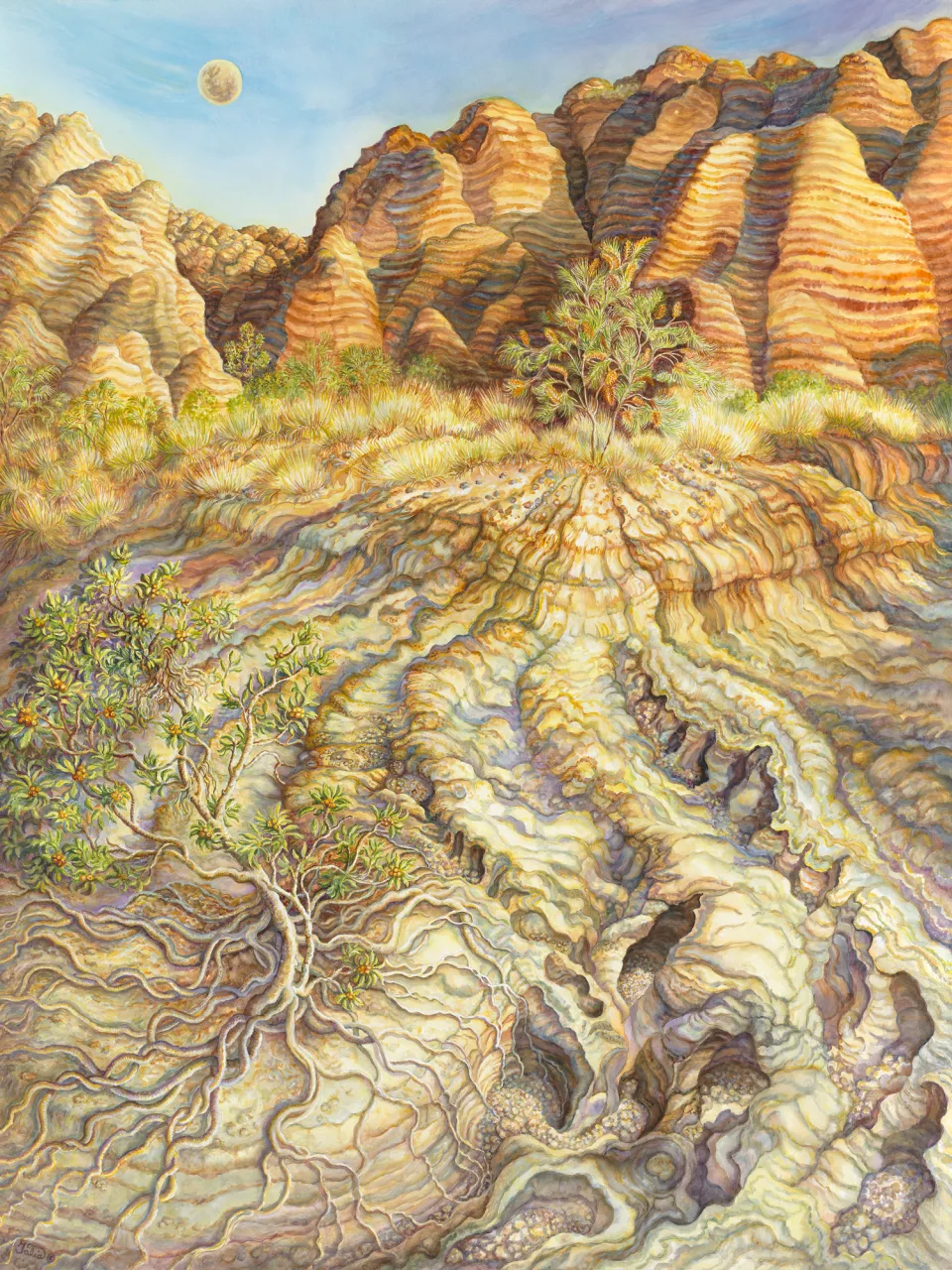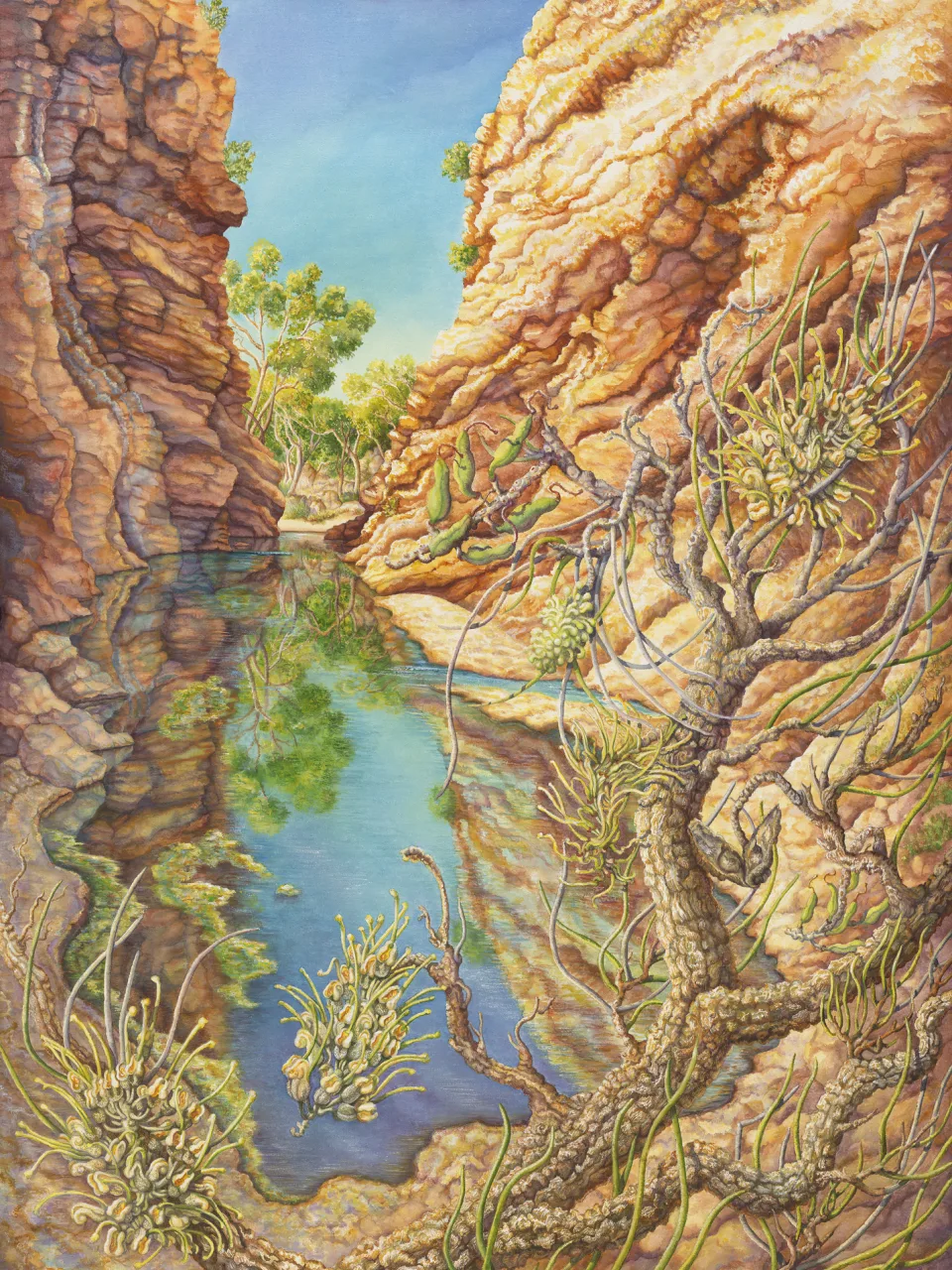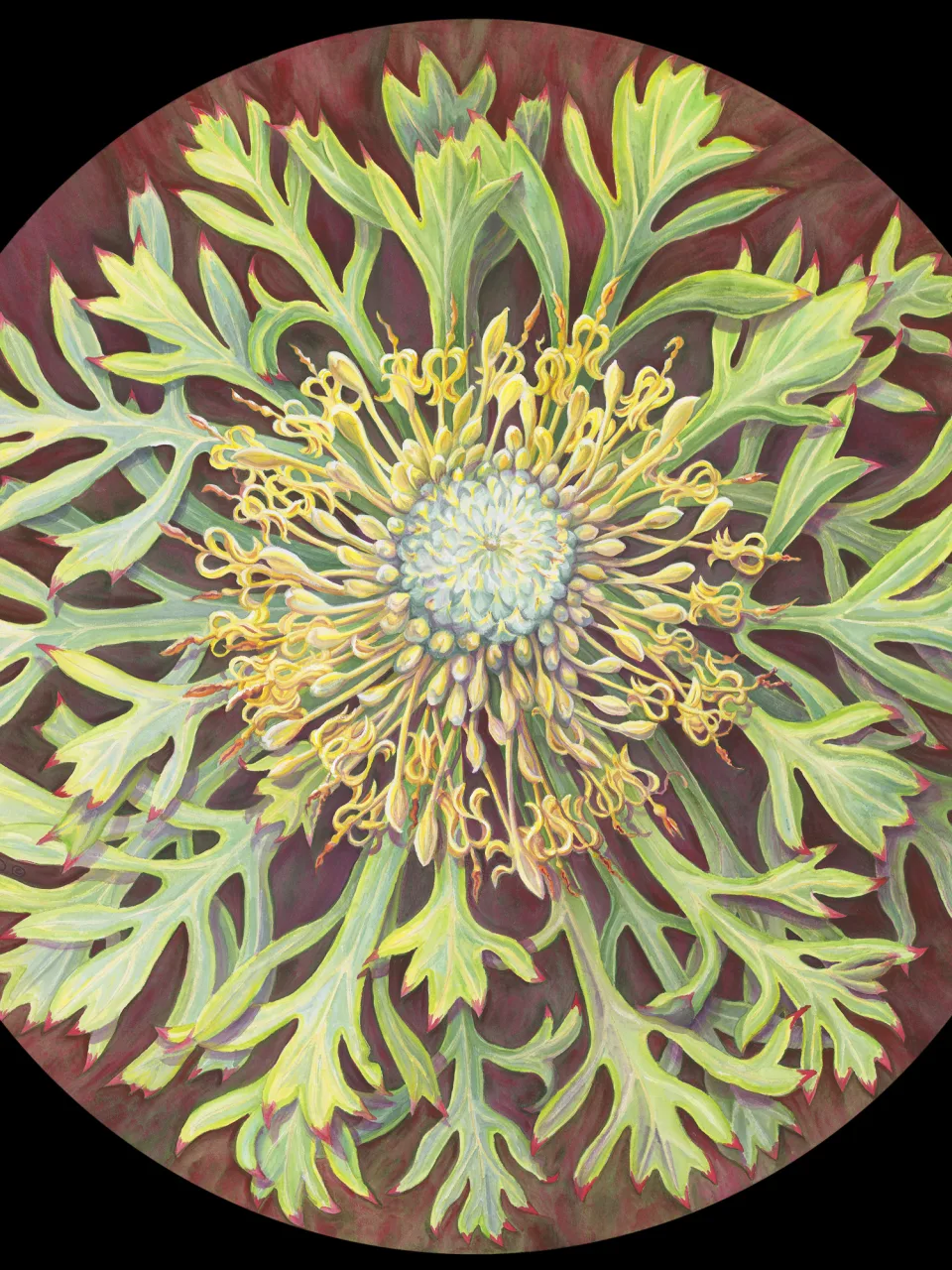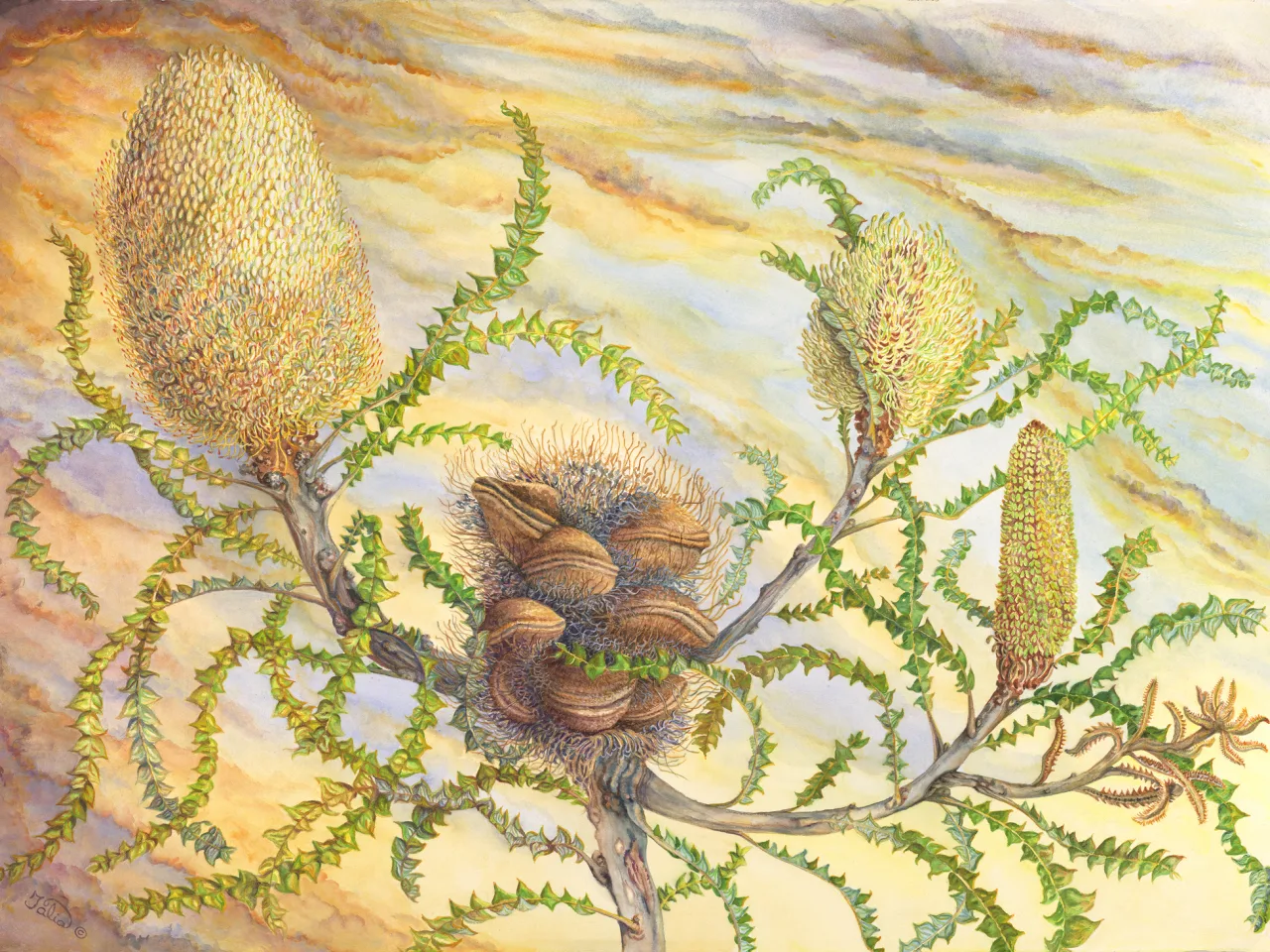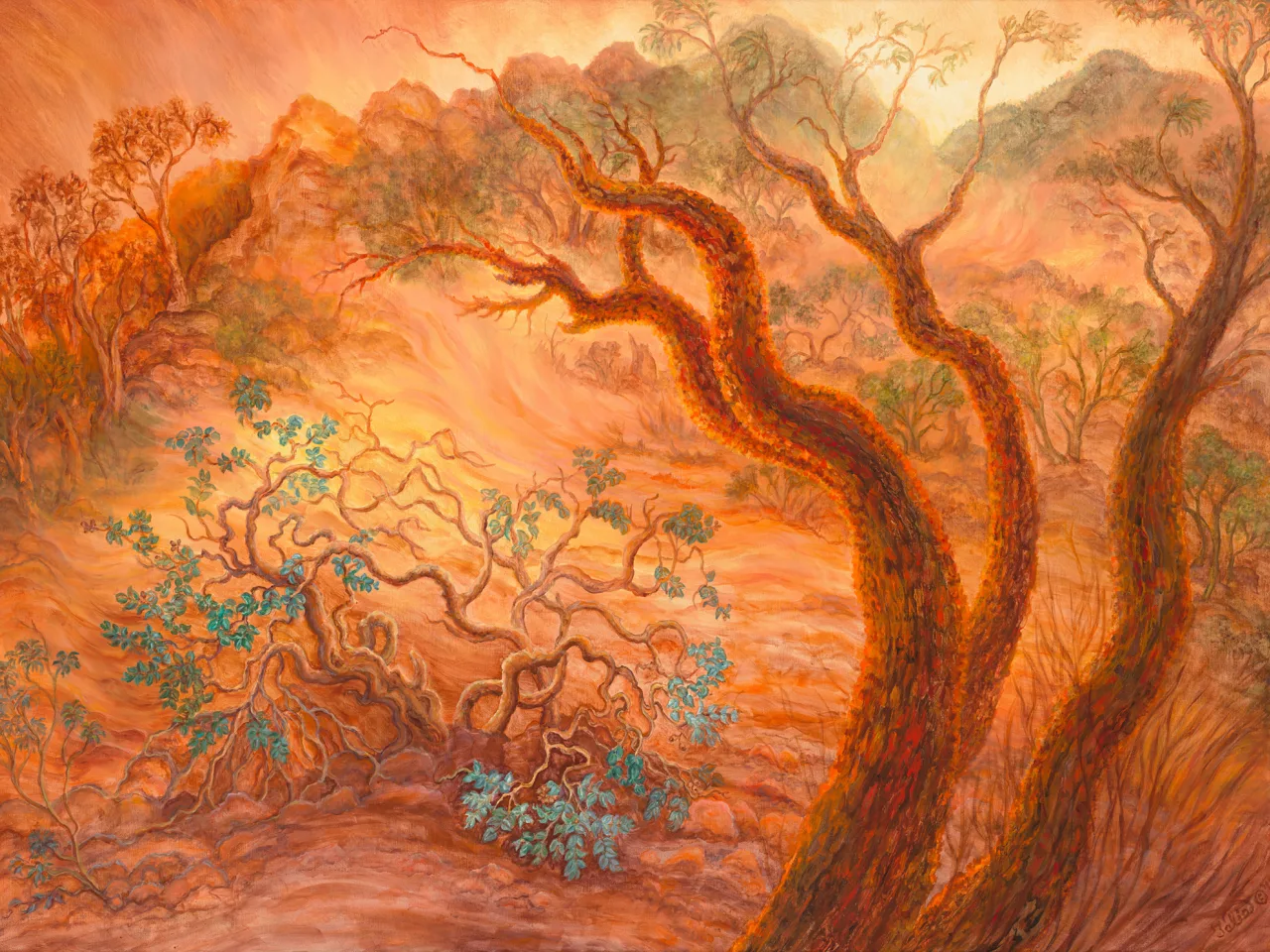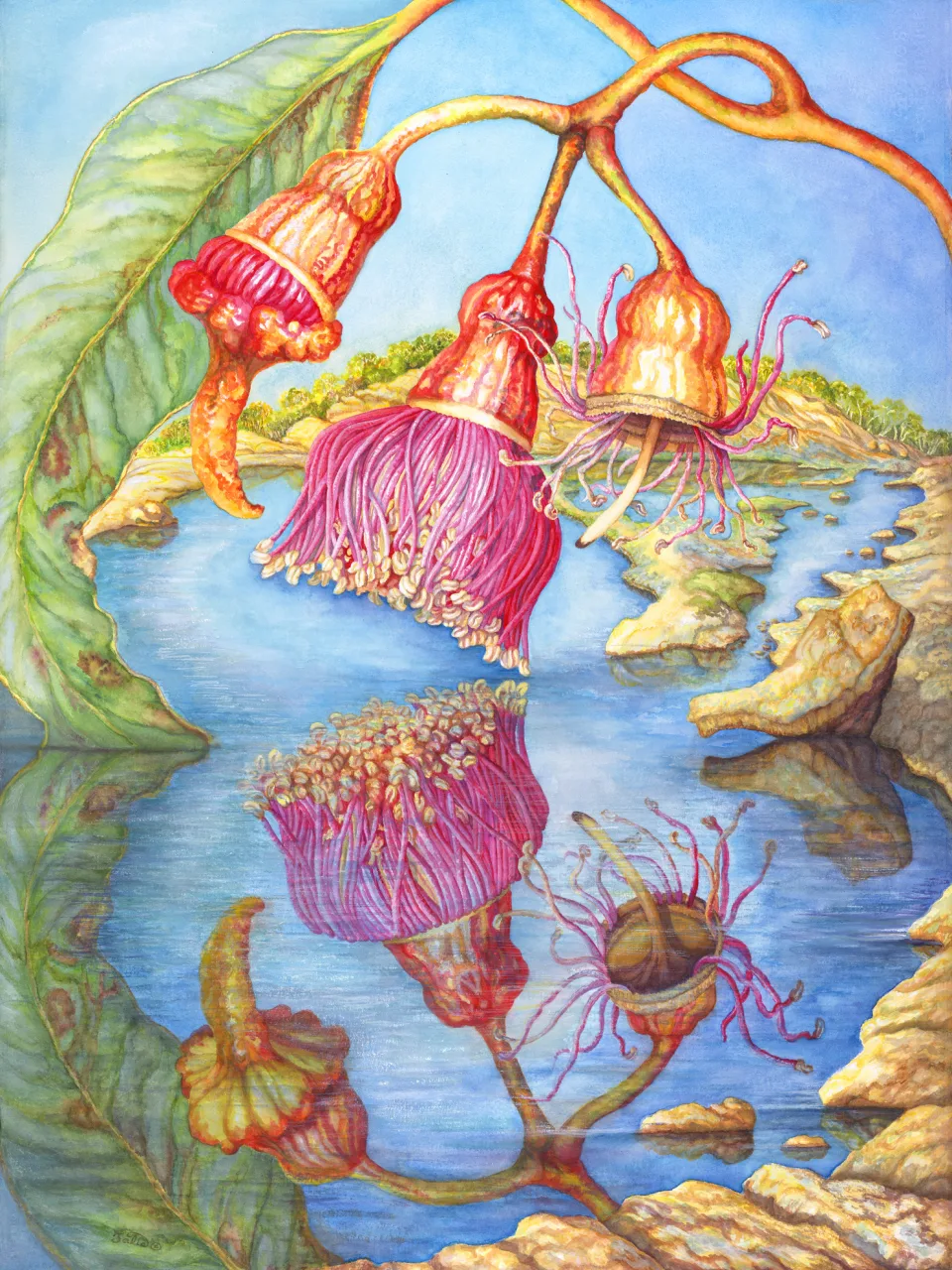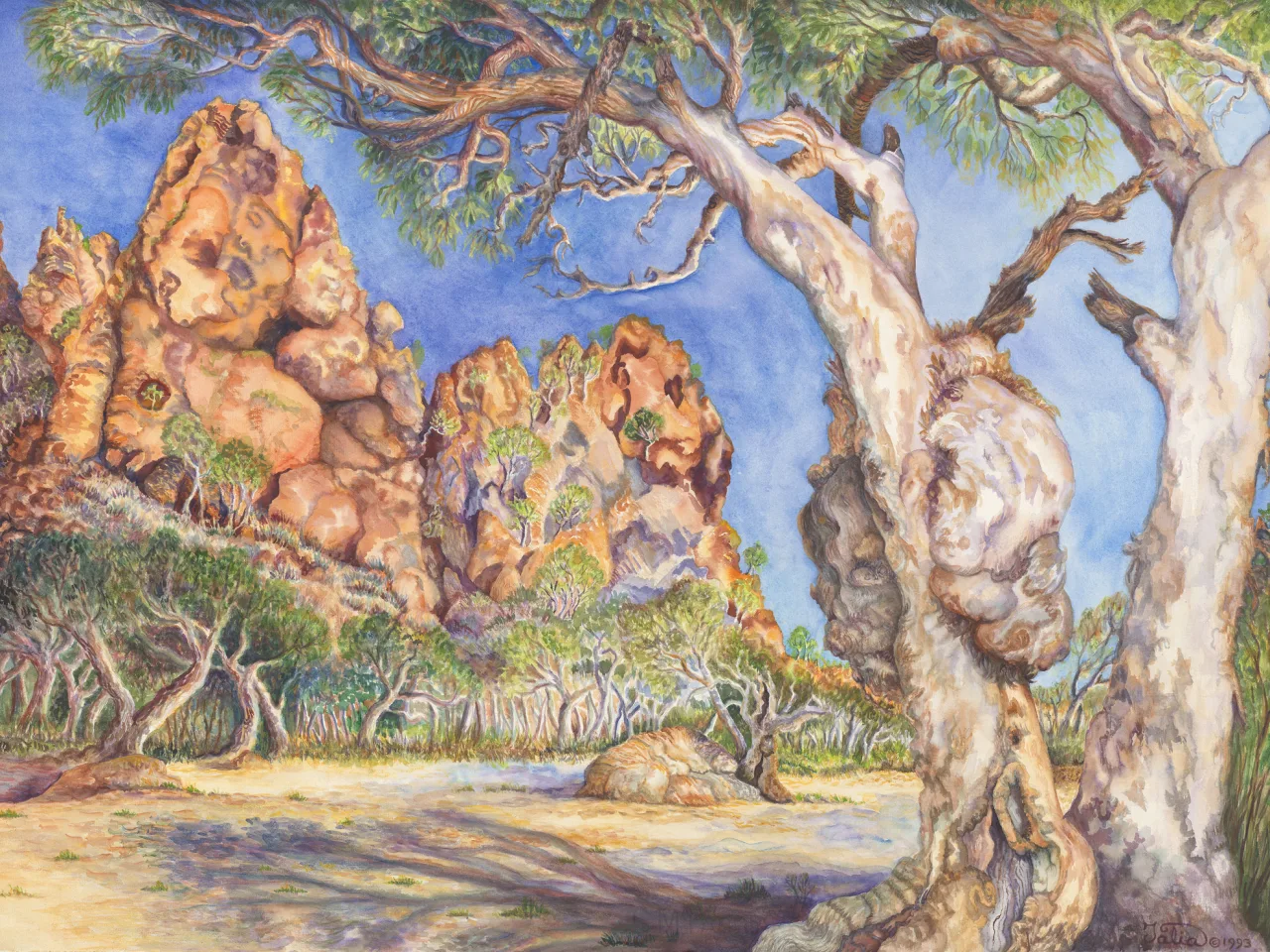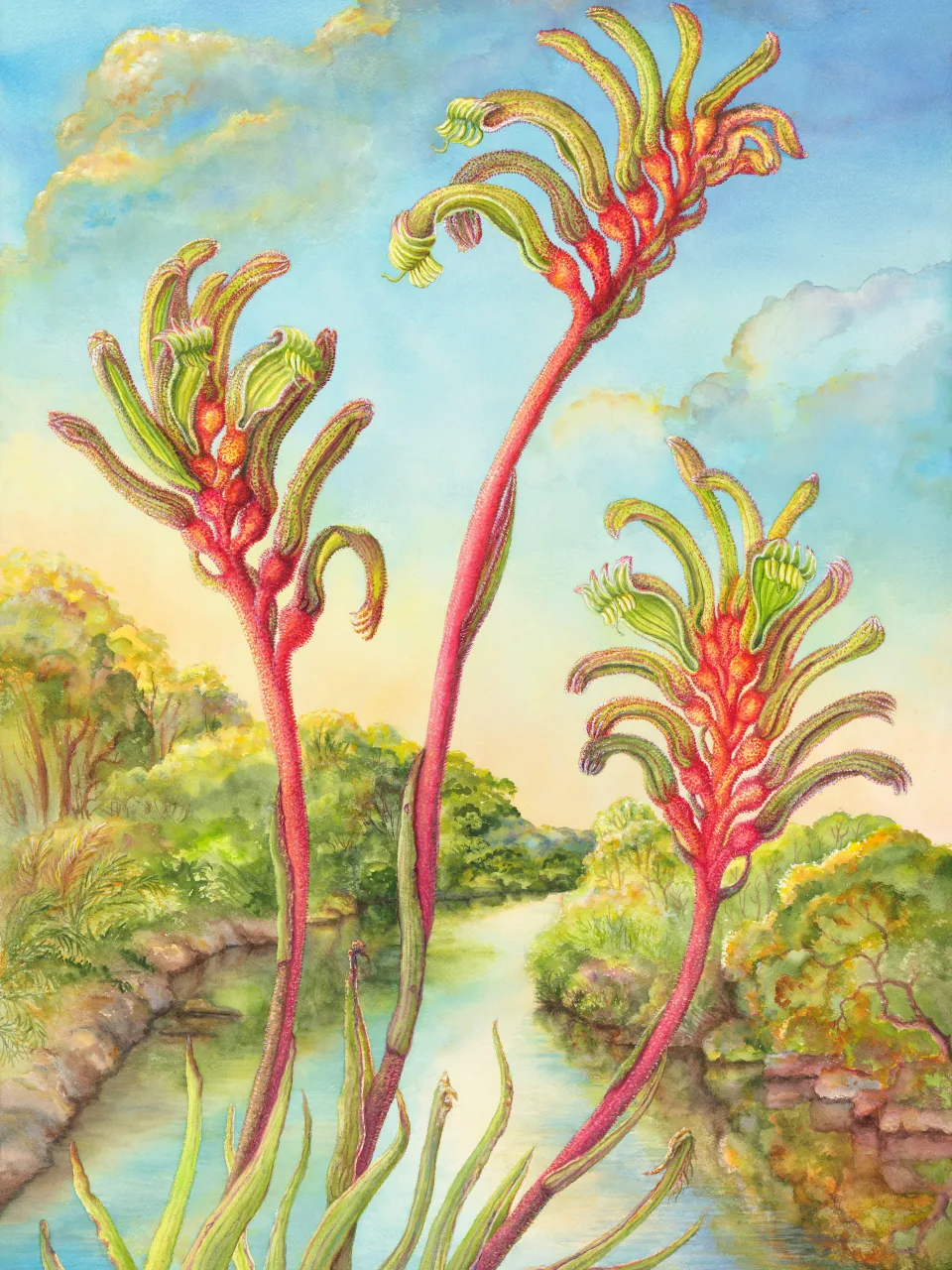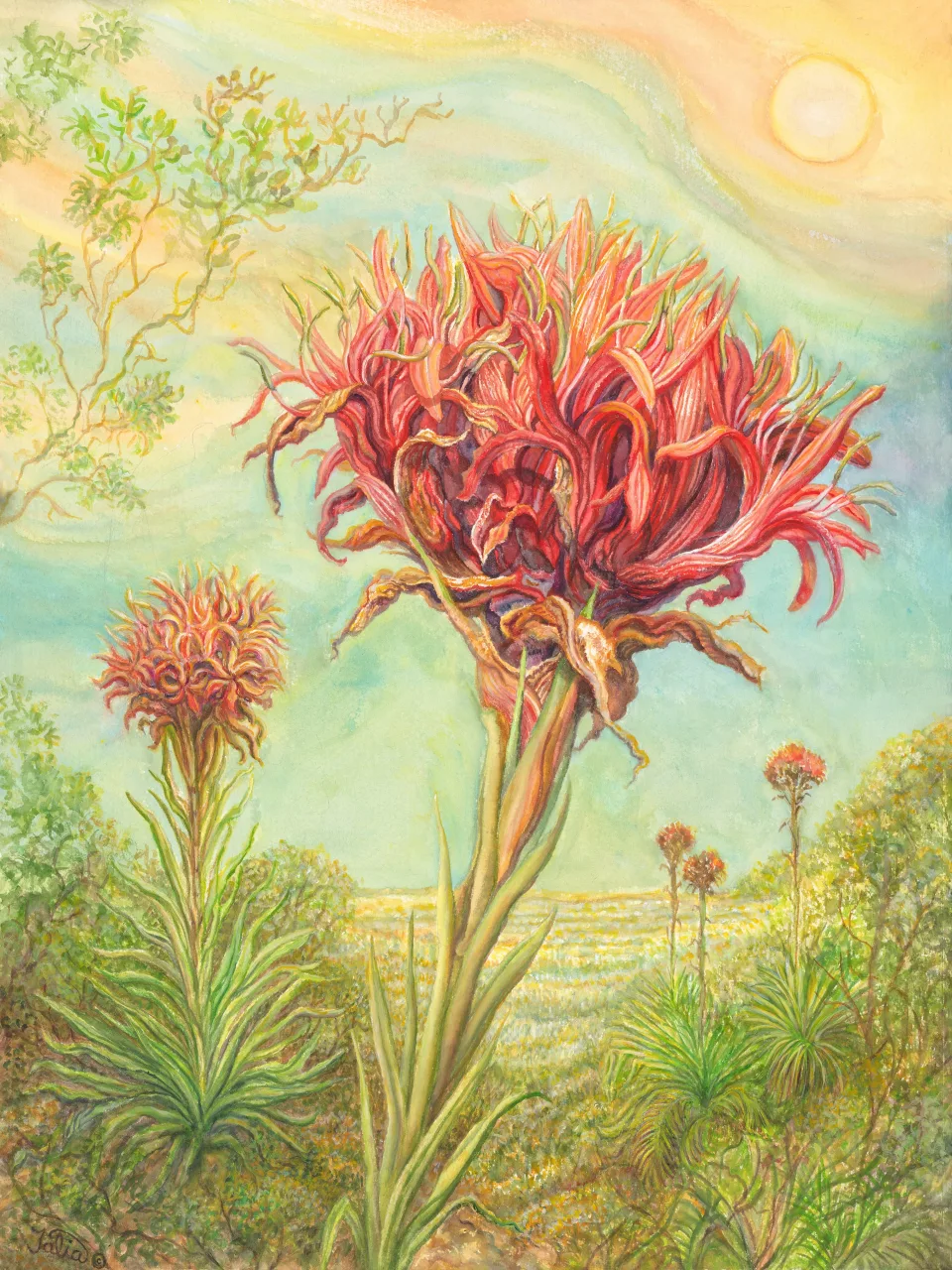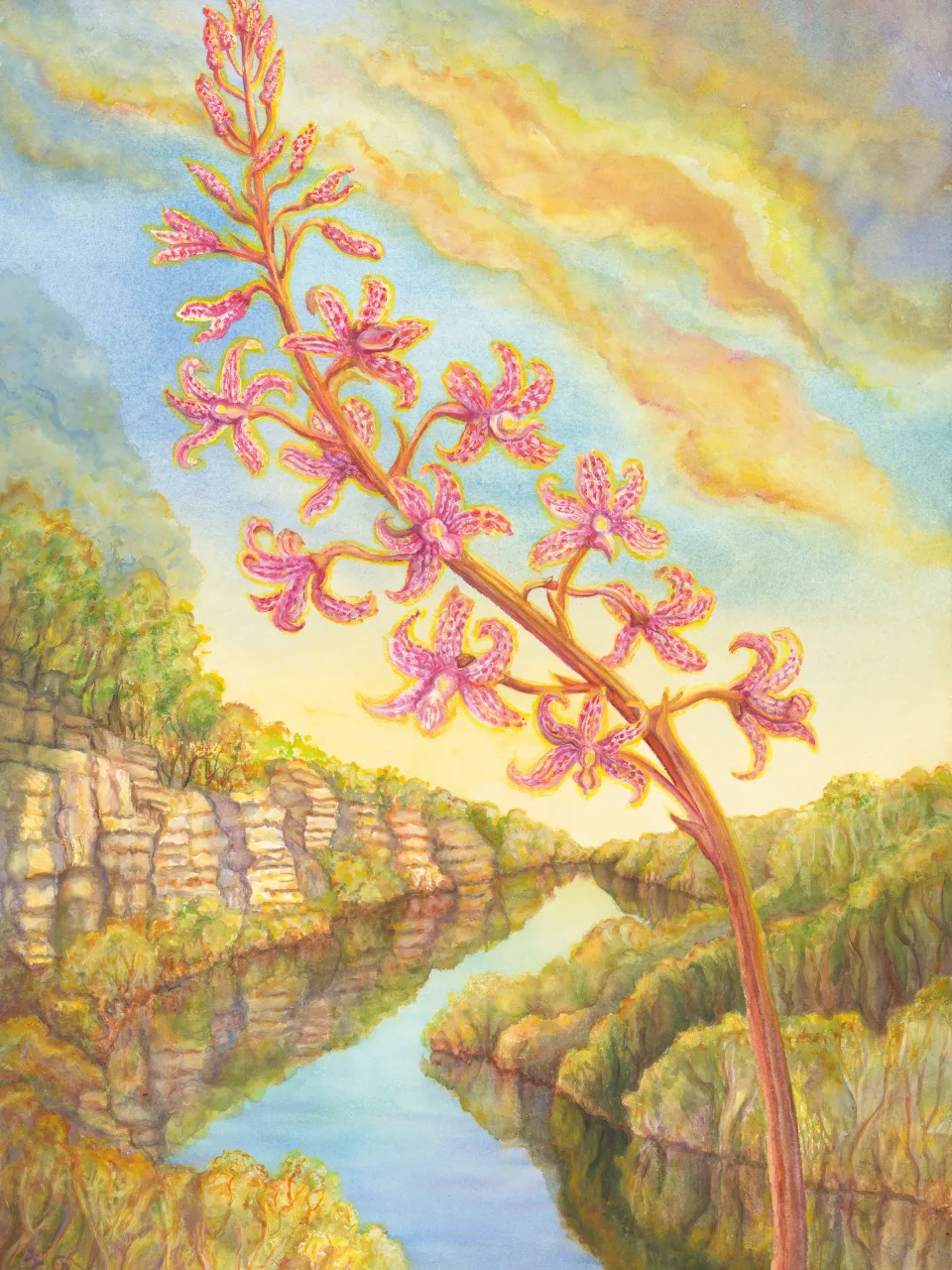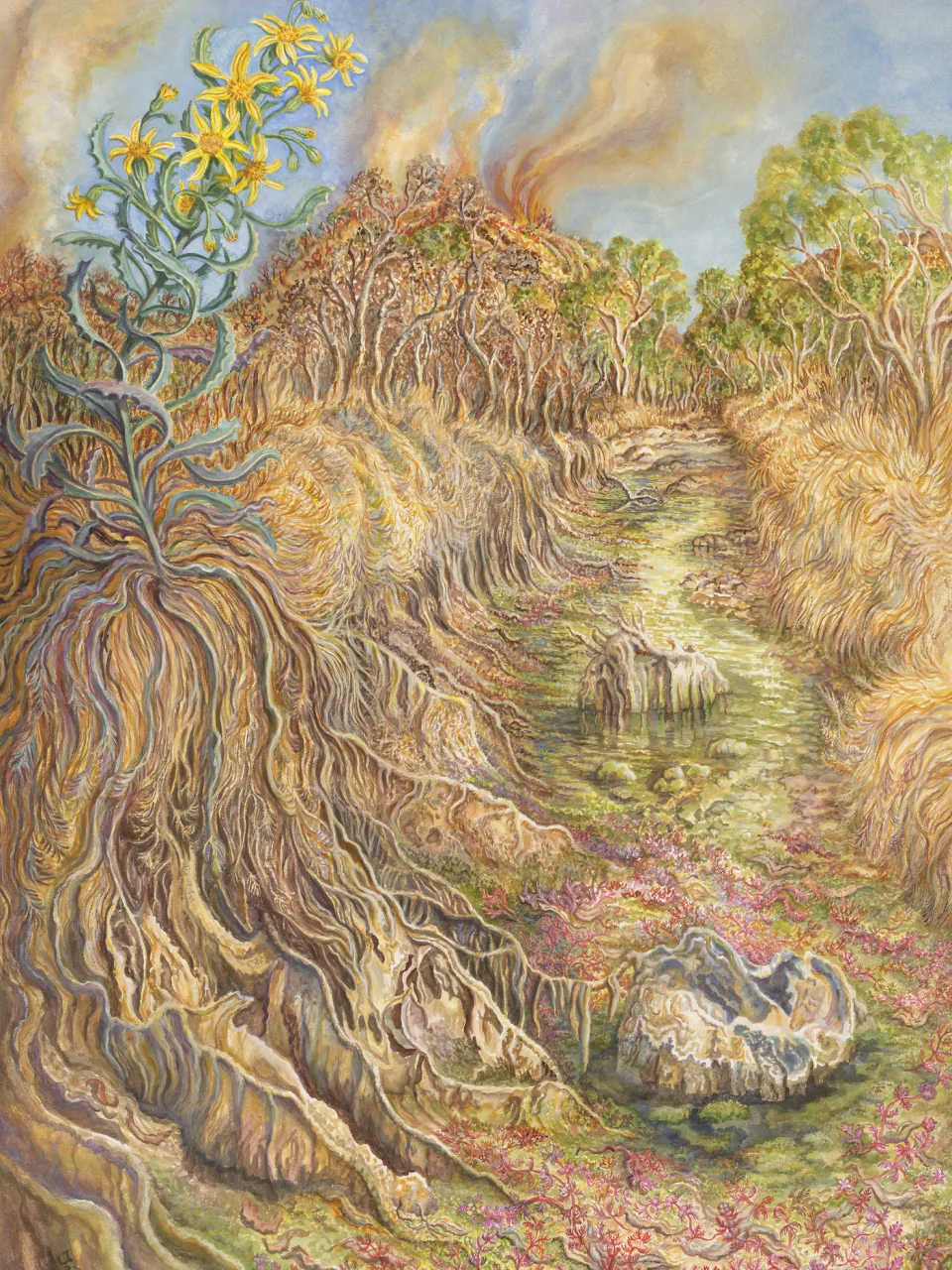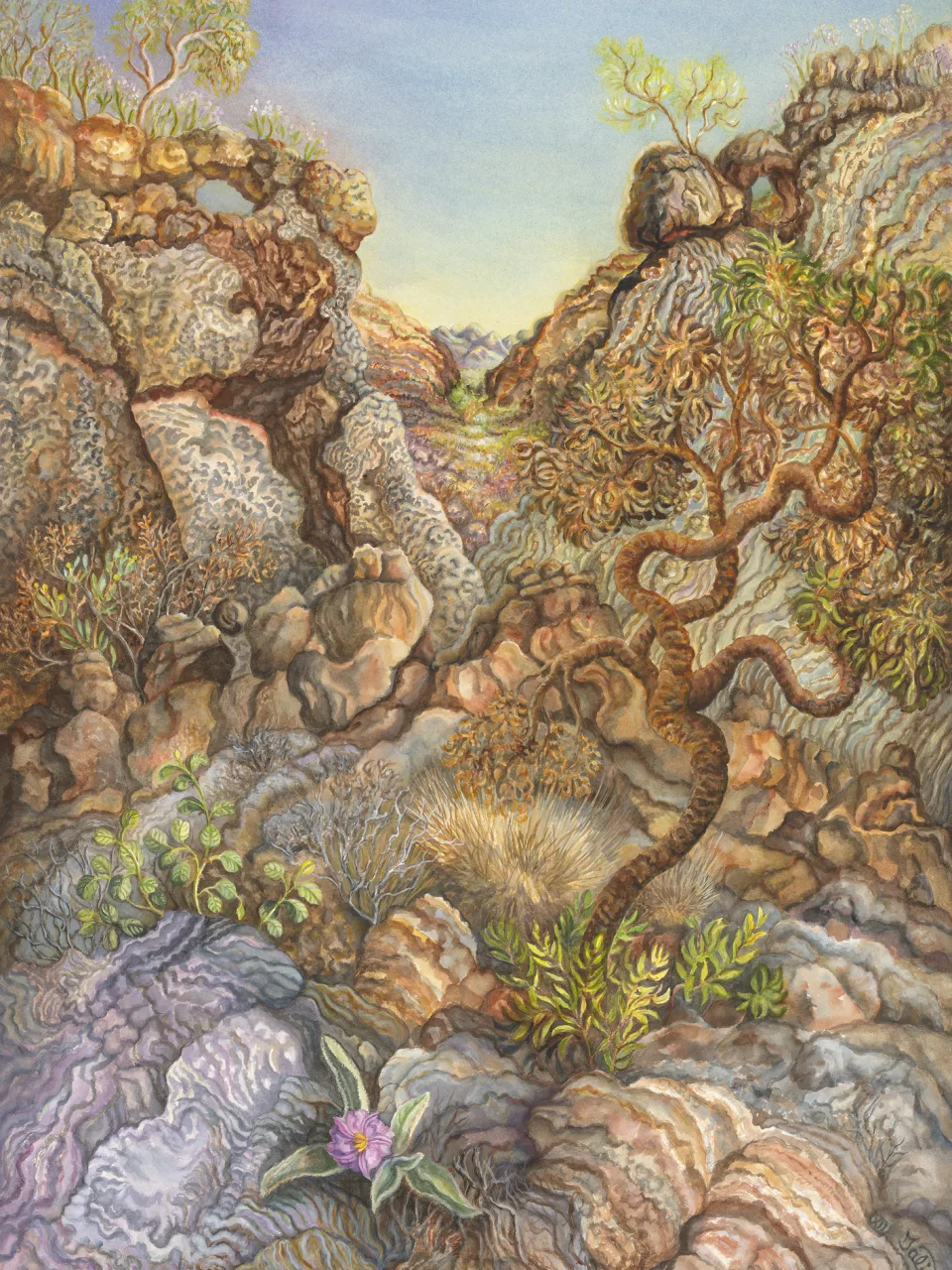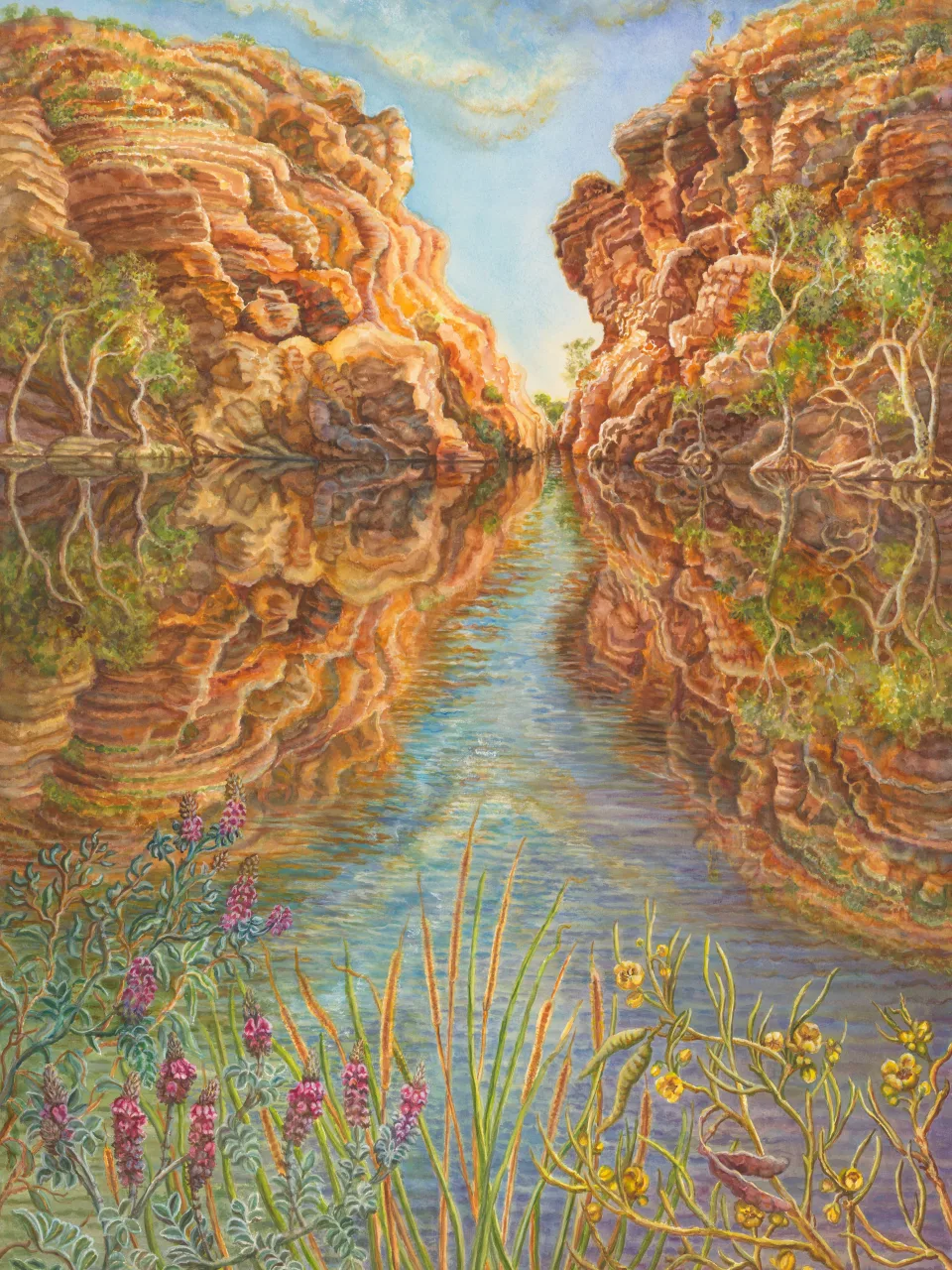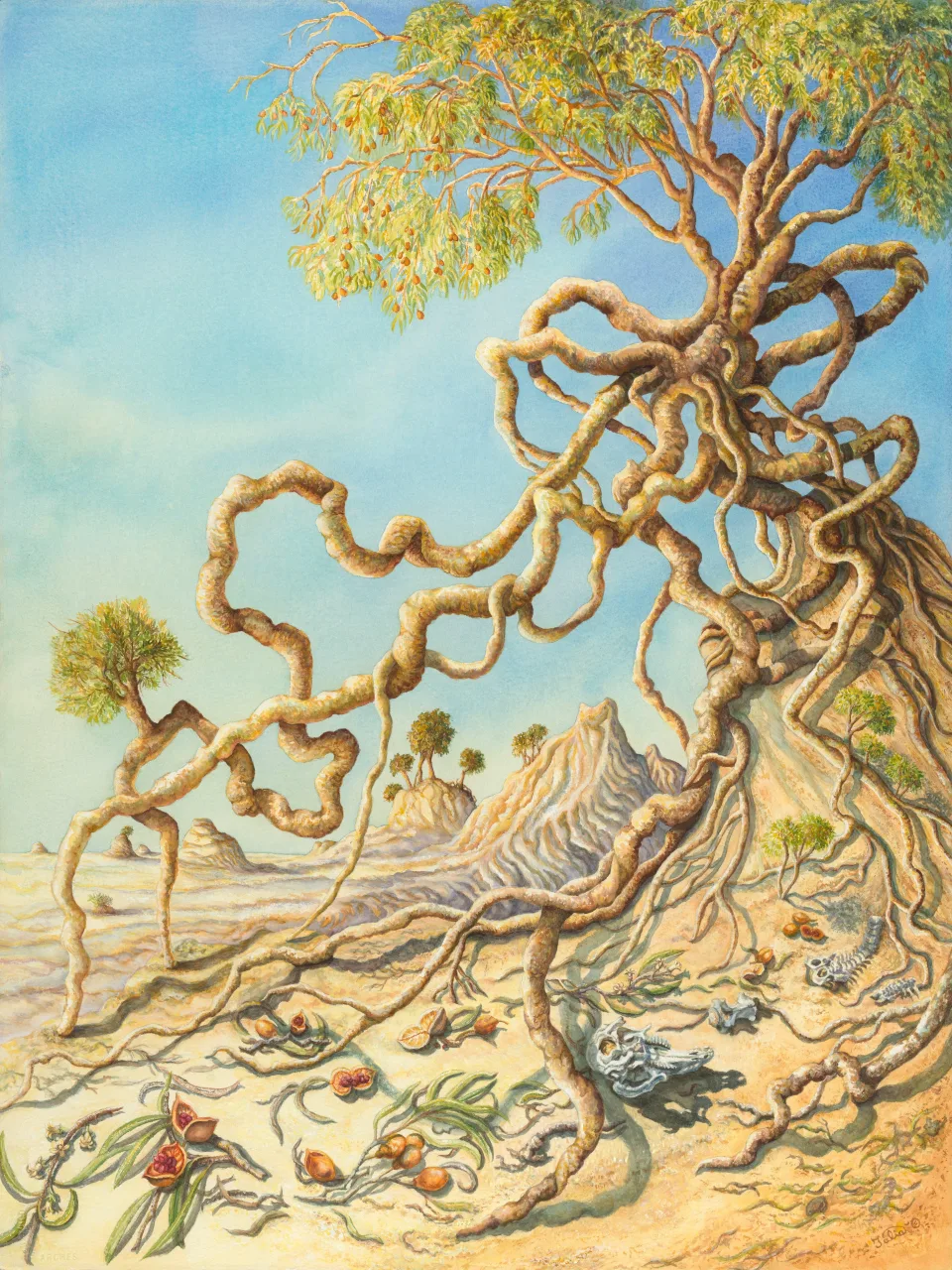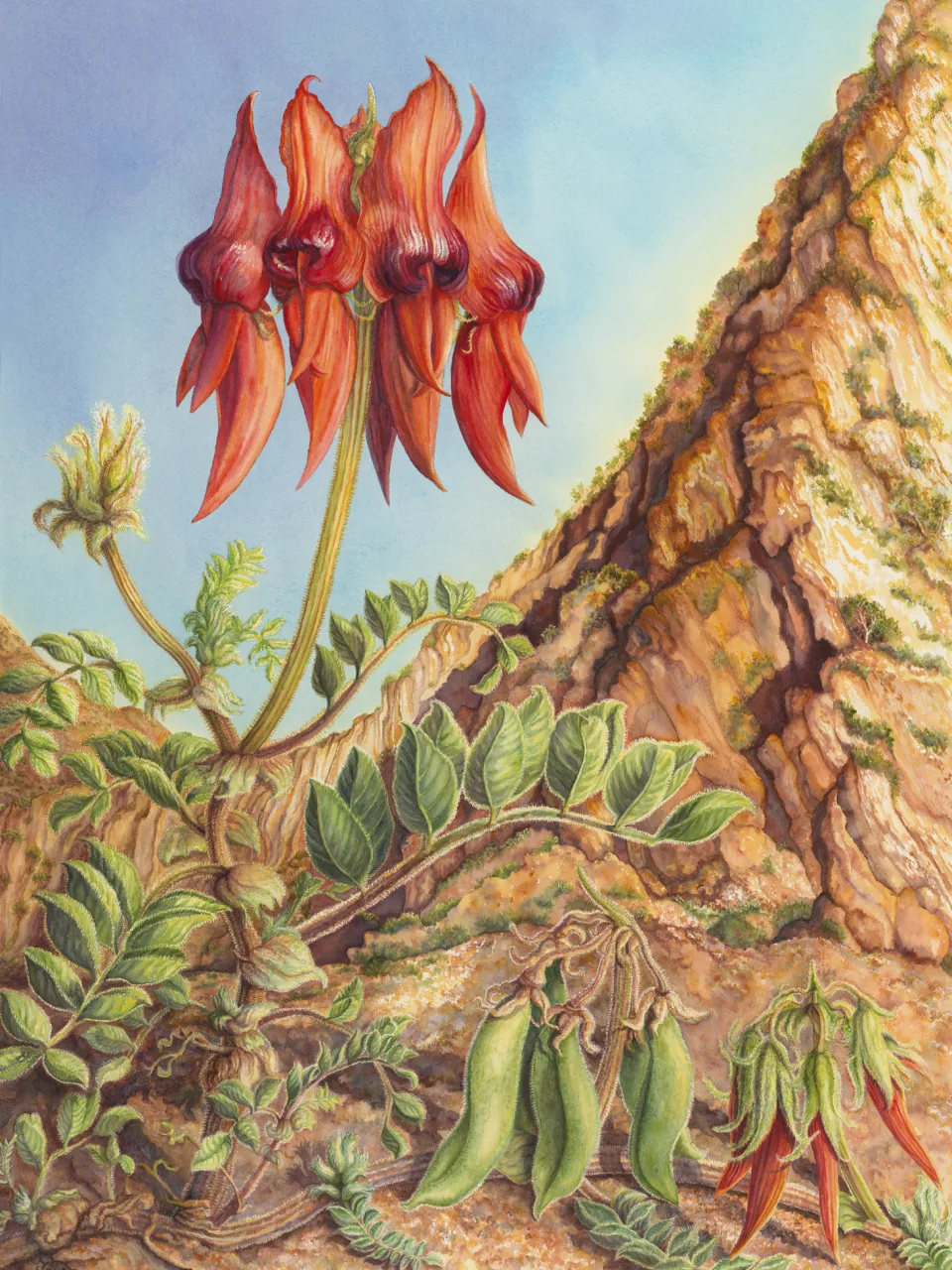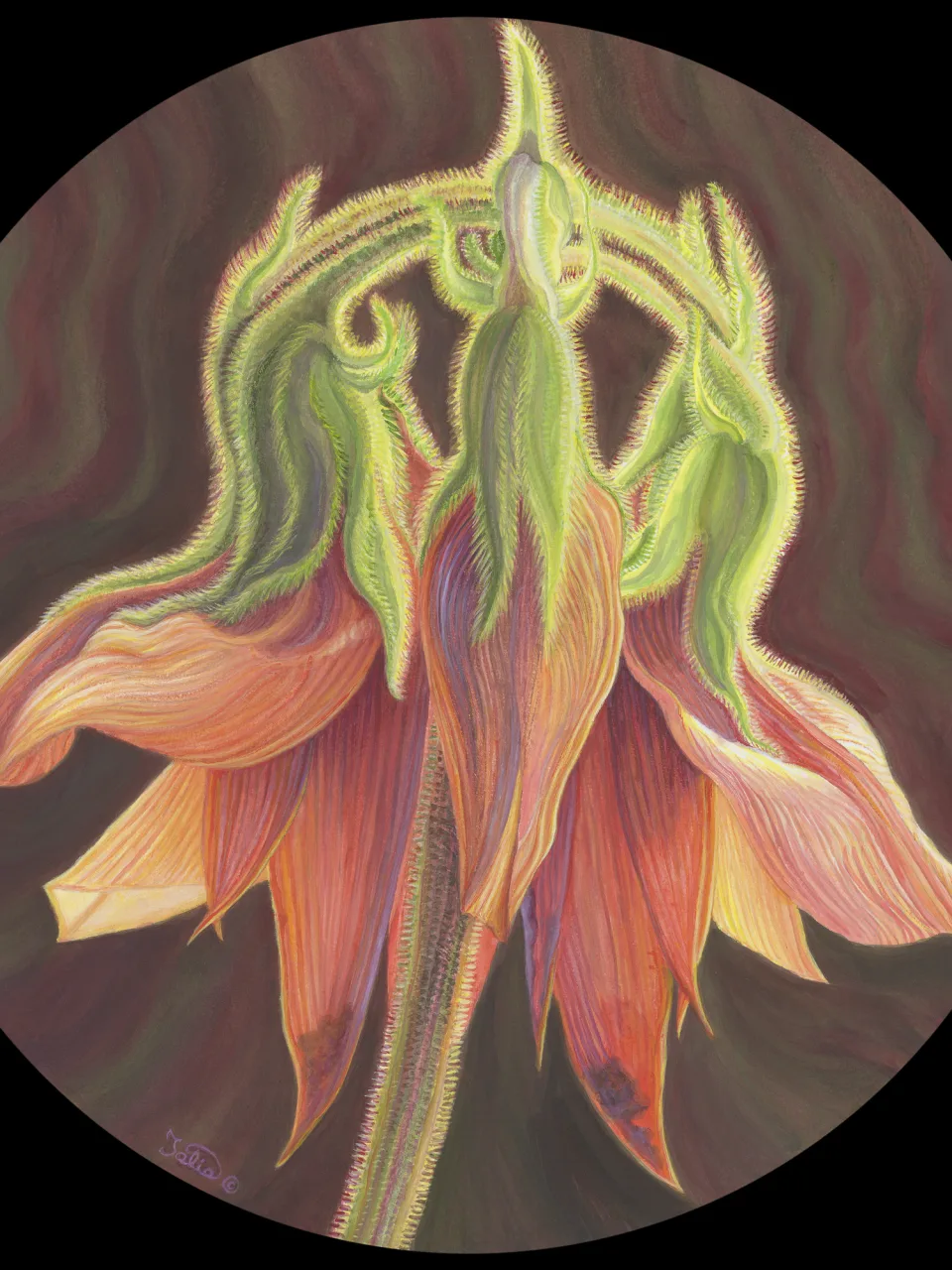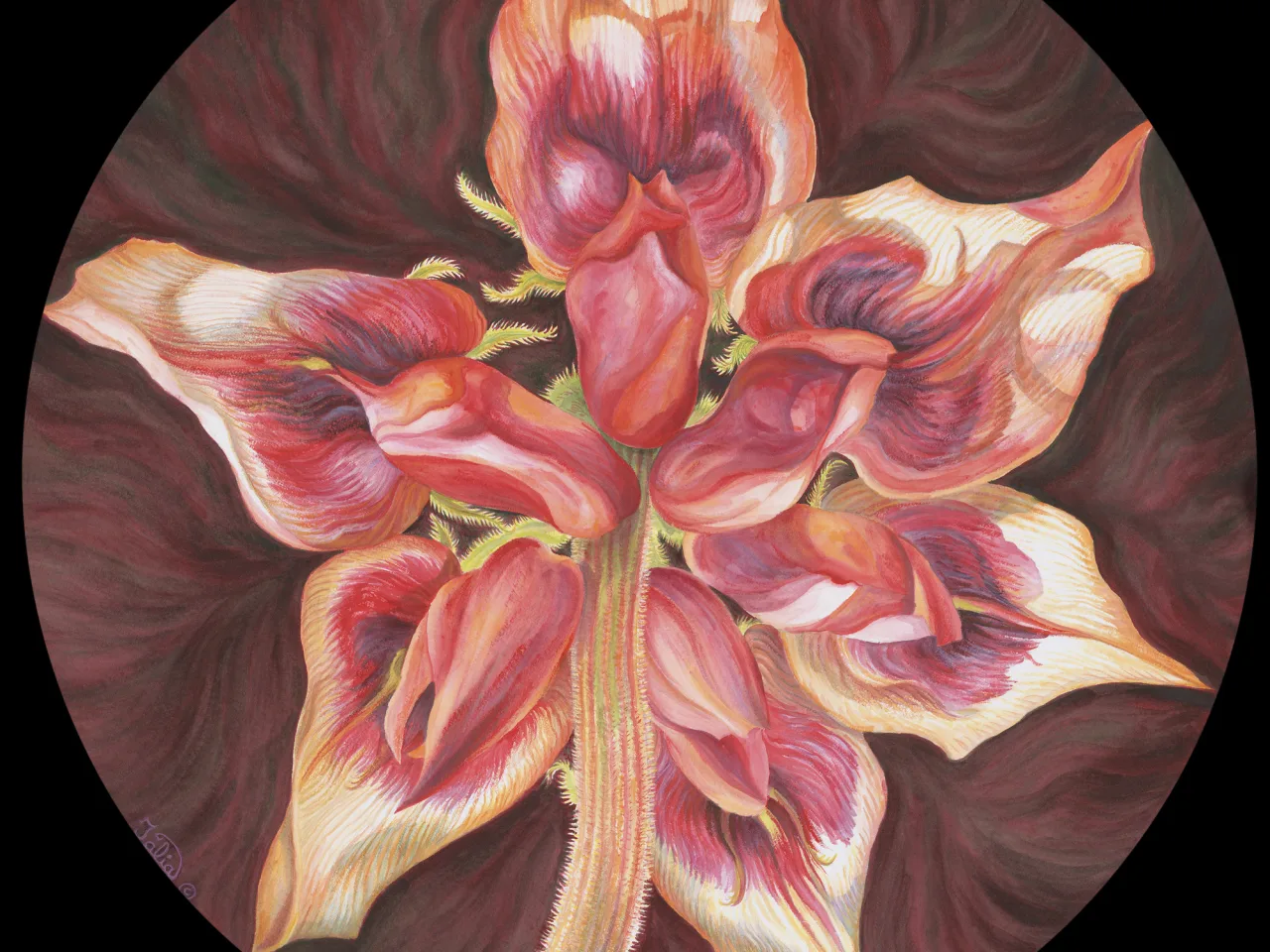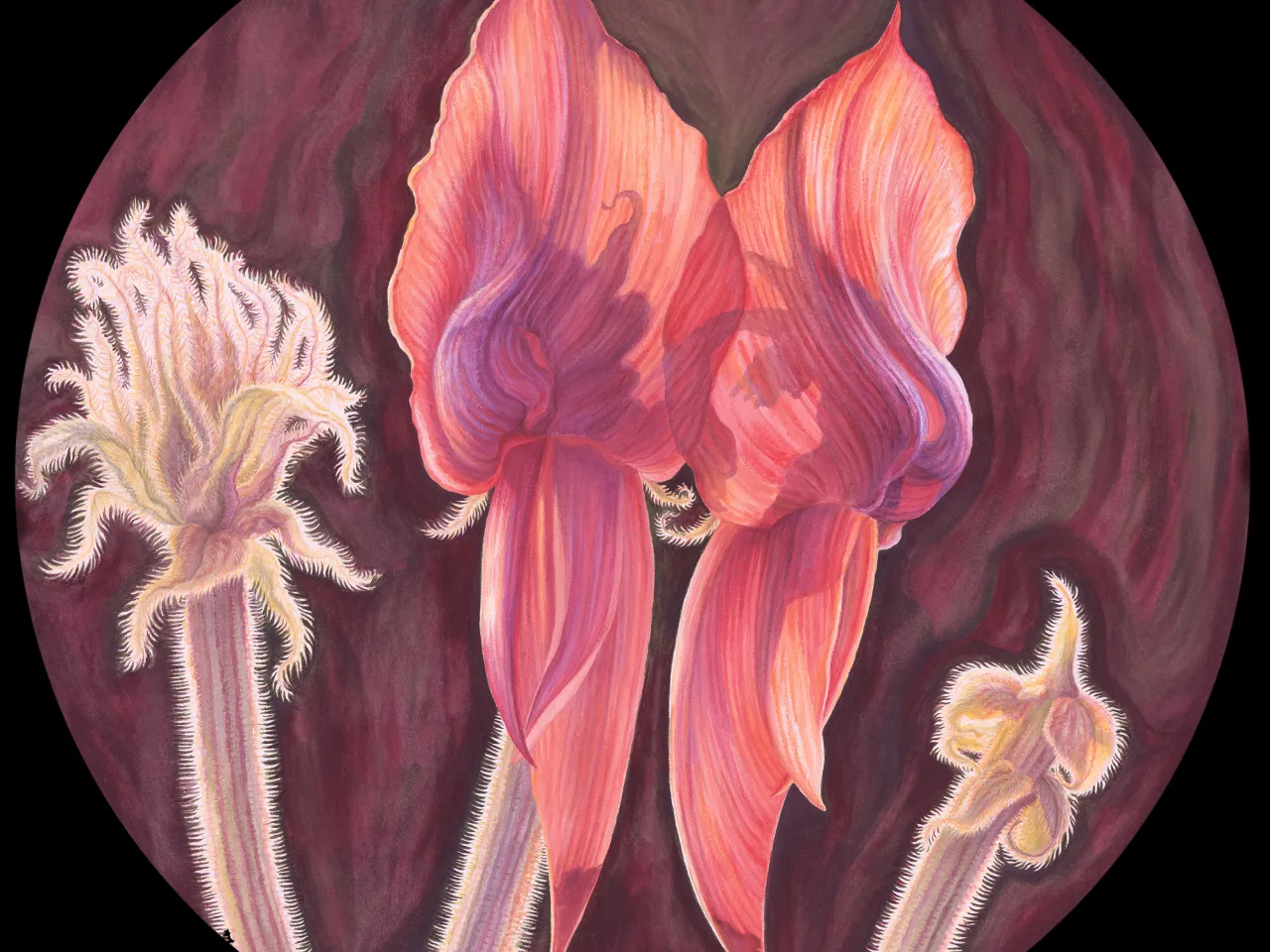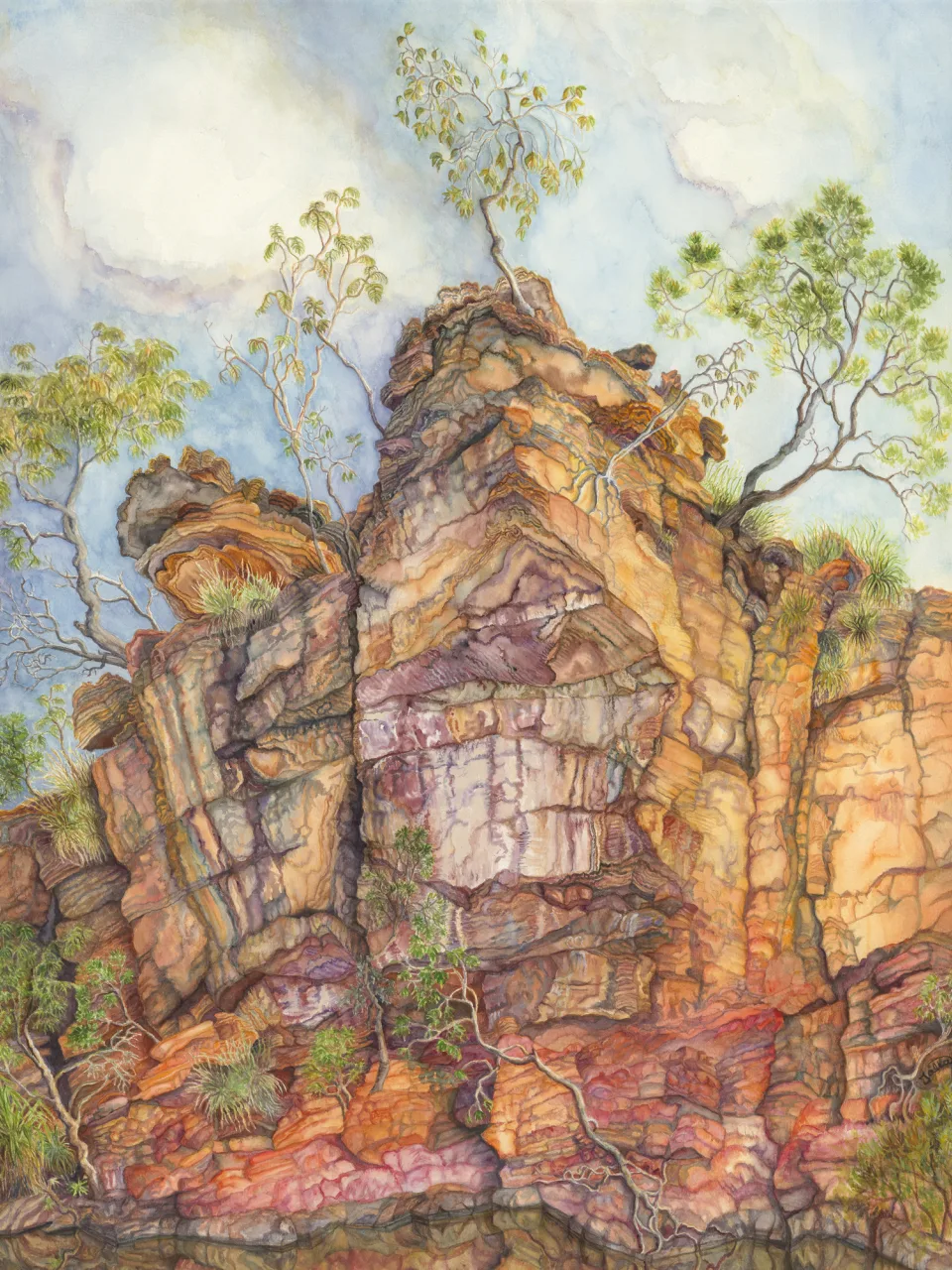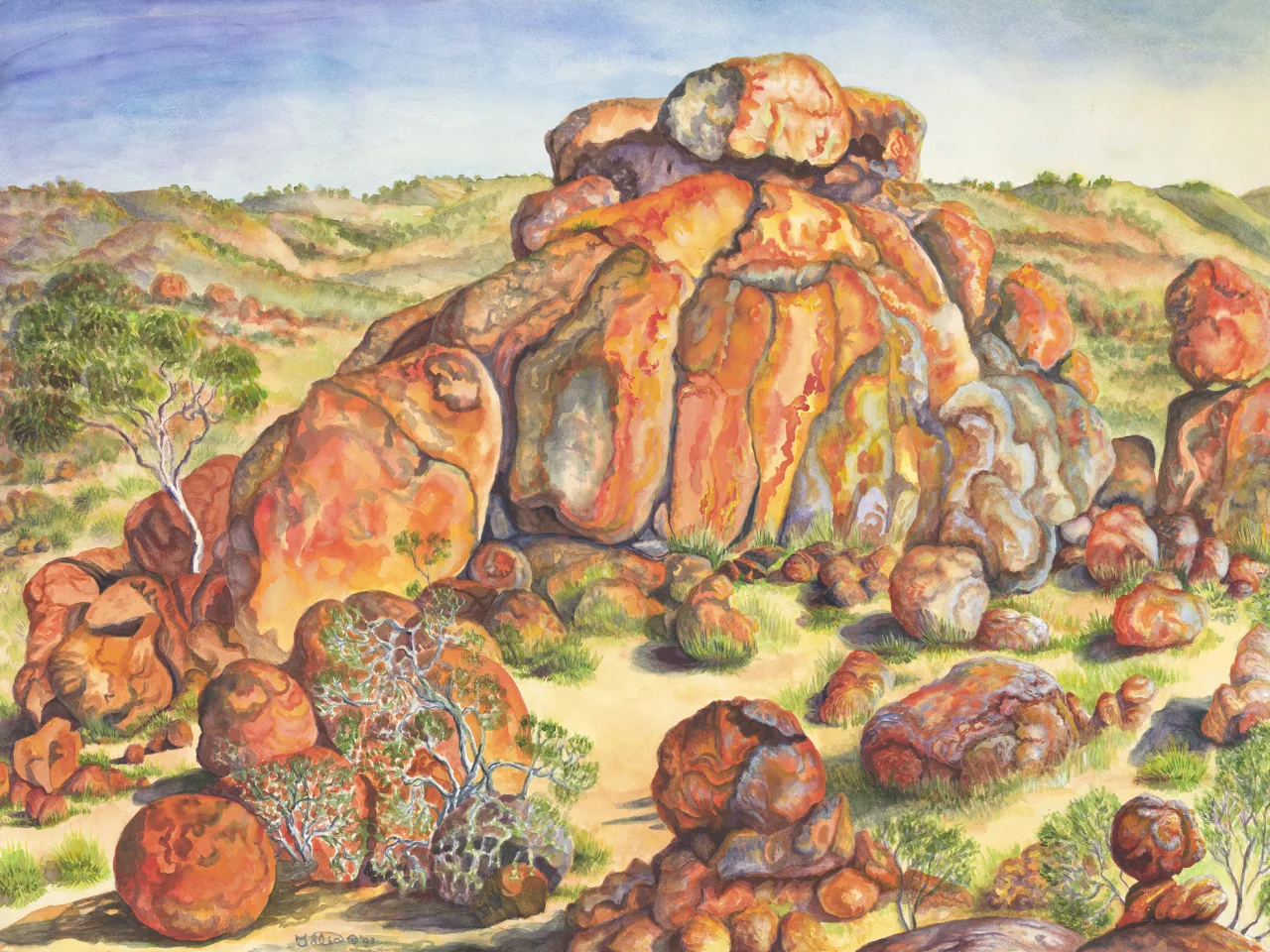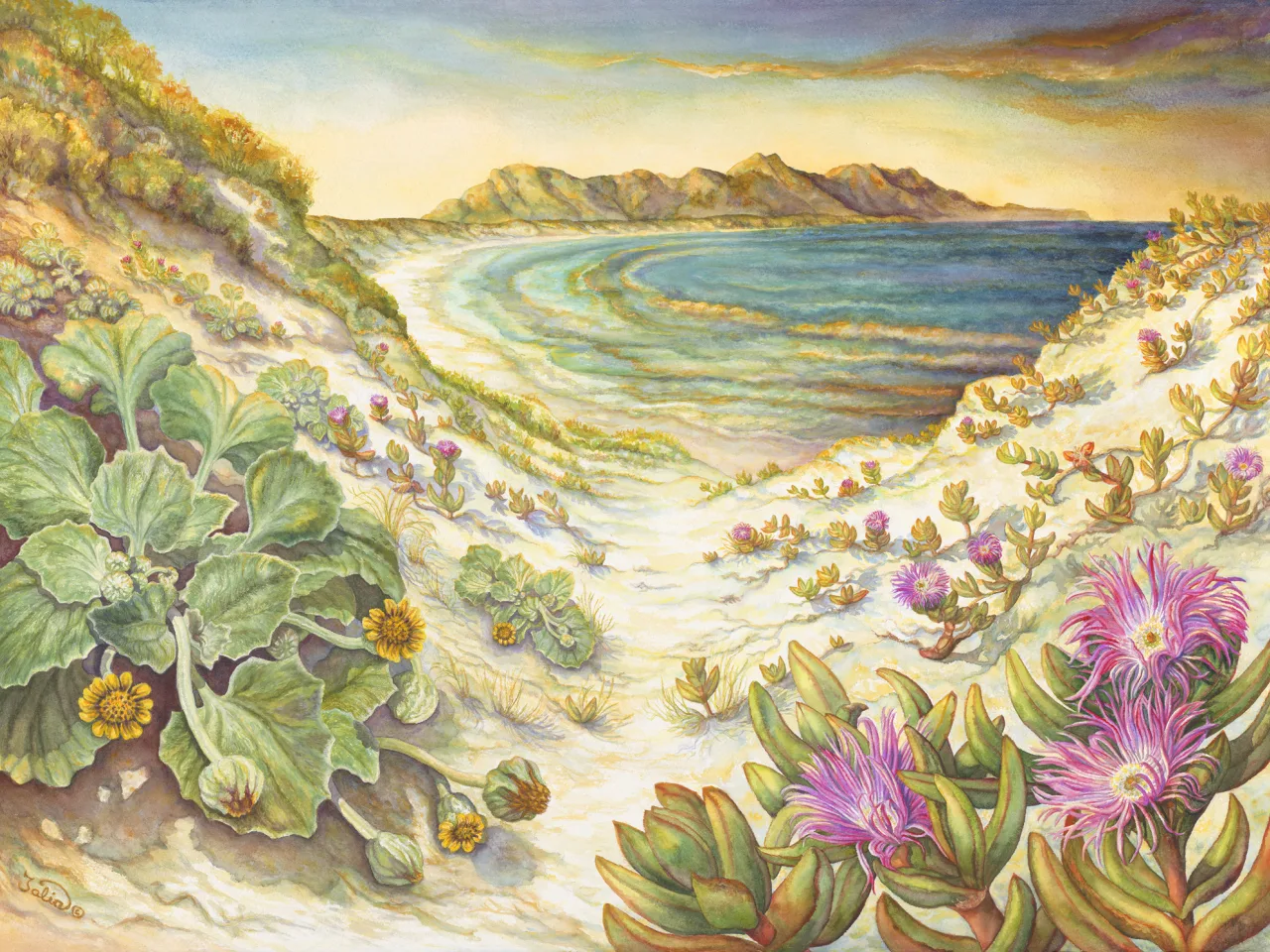Artwork 58 Ellery Quintet: A Year in the Life of a Desert Oasis. IV— After First Rains: New Life in the Creek Bed
Section 30
A Year in the Life of a Desert Oasis—Ellery Quintet
Ellery Creek, Tjorita / West MacDonnell National Park, Northern Territory
- 1. Calocephalus platycephalus (yellow billybuttons)
- 2. Calotis latiuscula (leafy burr-daisy)
- 3. Crotalaria eremaea (desert rattlepod)
- 4. Eucalyptus camaldulensis (river red gum)
- 5. Wahlenbergia sp. (bluebell)
Artwork 58
Buy a print
Limited edition giclee archival quality print on 310 gsm Ilford cotton rag (from an original work in watermedia on watercolour board, 71 cm high x 51 cm wide)
from the artist
Ellery Creek is a cornucopia of geological treasures. One rock on the left of this painting displays multiple rocks and pebbles of various sizes and shapes embedded in a finer matrix—this is tillite, formed during the glacial period 750 mya. Pink granite boulders called “erratics” can also be seen in the creek bed (centre left). They were carried along by glaciers and dropped when the glaciers melted. Pink dolomite rocks (on the right of the painting), some containing stromatolite columns, may have formed in shallow seas in between the ice ages. Some display scratch marks that were probably formed during the second major ice age about 625 mya, the Marinoan (Thompson, 1995, pp. 72, 101).
In amongst the colourful rocks new plants were appearing out of the ashes. The “bluebells” (Wahlenbergia) to front right have a fleshy taproot, and tufts can be connected by underground stems. Nearby is a burnt “tuft”. Such drought and fire devices employed by the bluebells enabled these brilliant blue flowers to emerge from the burnt soil litter in the creek bed before rain arrived.
Above the bluebells is “leafy burr-daisy” (Calotis latiuscula), belonging to a genus of about 20 species found only in Australia. Many are arid-adapted, and this particular plant is a perennial that often grows in sandy areas.
The other two yellow flowering plants are also drought- and fire-tolerant. To far left is “desert rattlepod” (Crotalaria eremaea), which responded to the rain which finally arrived in September, after nearly 8 months of drought. The name eremaea means “desert-lover” (Latz, 1995/1996, p. 154; Urban, 1990, pp. 90–91). The bright yellow globular flowers (centre left) are appropriately nicknamed “yellow billybuttons”. This species is Calocephalus platycephalus, with flattened tops on many of the flower heads (hence Greek kephalus (heads), kalos (beautiful), and platy (flat)).
The burnt river red gums (Eucalyptus camaldulensis) in the creek bed are brilliant survivors. They can withstand both seasonal flooding and fire, and are a familiar sight on riverine flats and lining the banks of creeks and rivers throughout mainland Australia. The hardy eucalypts along Ellery Creek (Eucalyptus camaldulensis subsp. obtusa (Urban, 1990, p. 140)) exhibit a significant fire survival strategy—new leaves sprouting from burnt trunks, as epicormic buds spring into action.
On the upper right branch, above the new stem and leaves, is flood debris deposited several months before the fires—a common sight in the creek.
